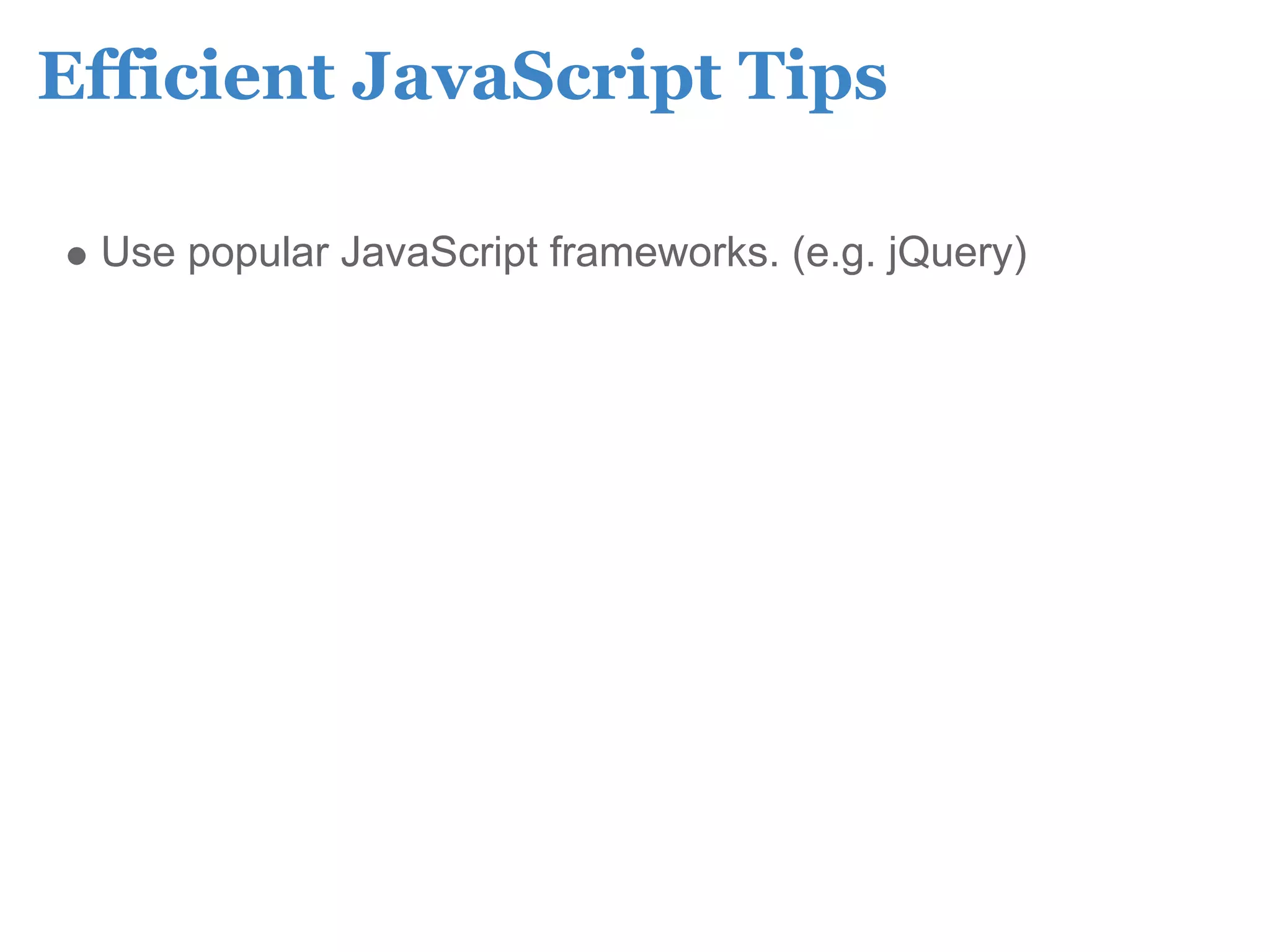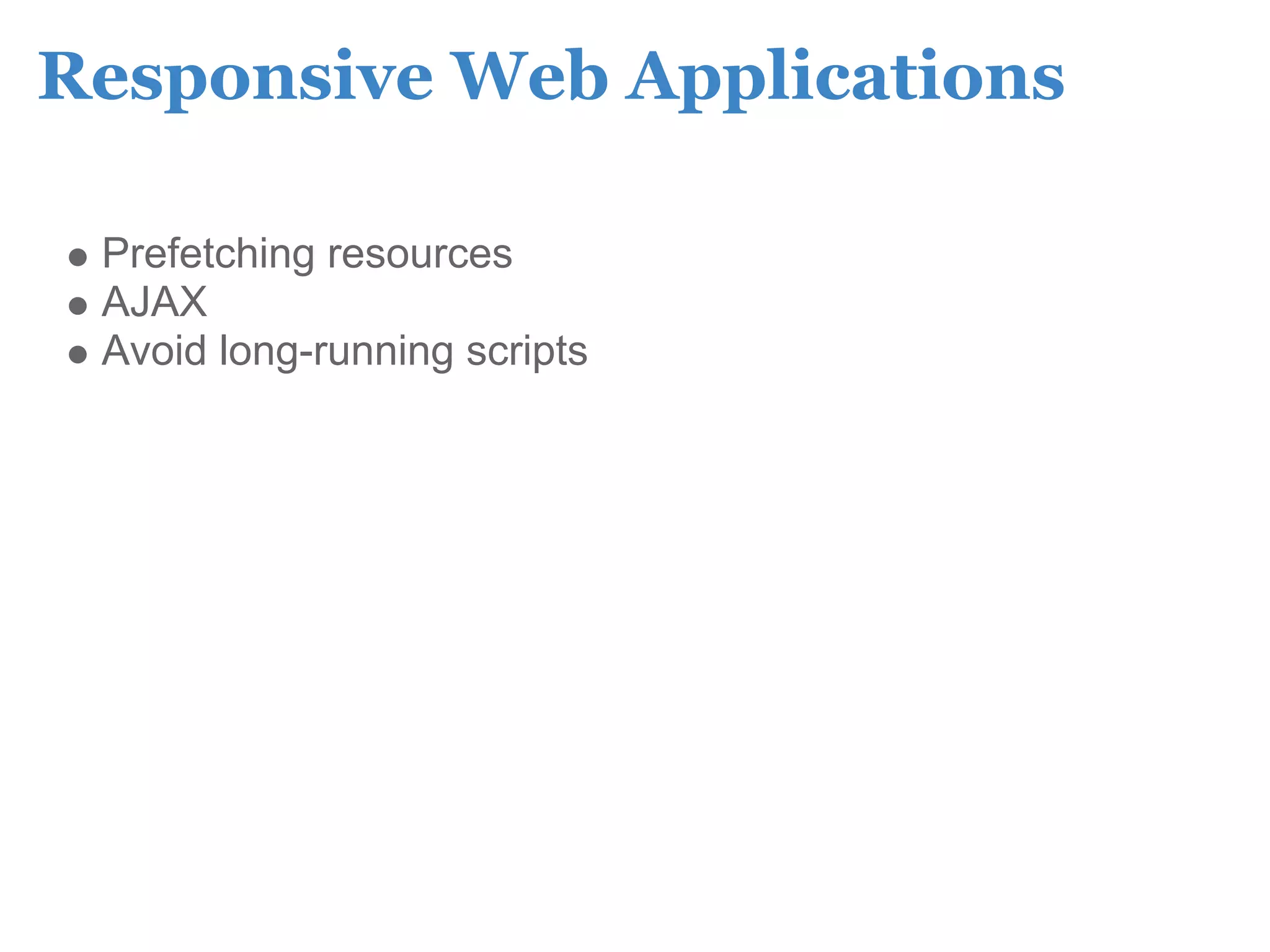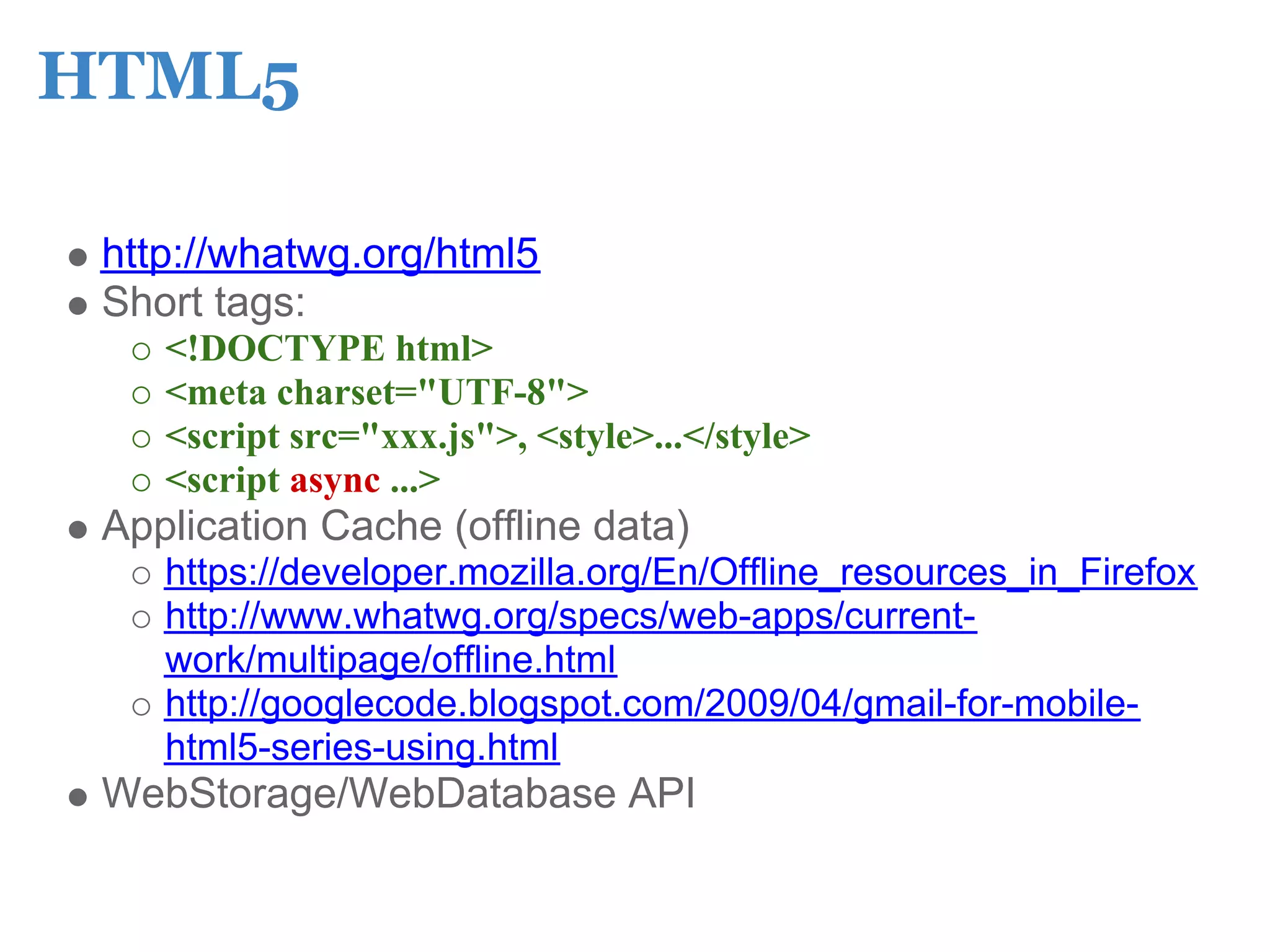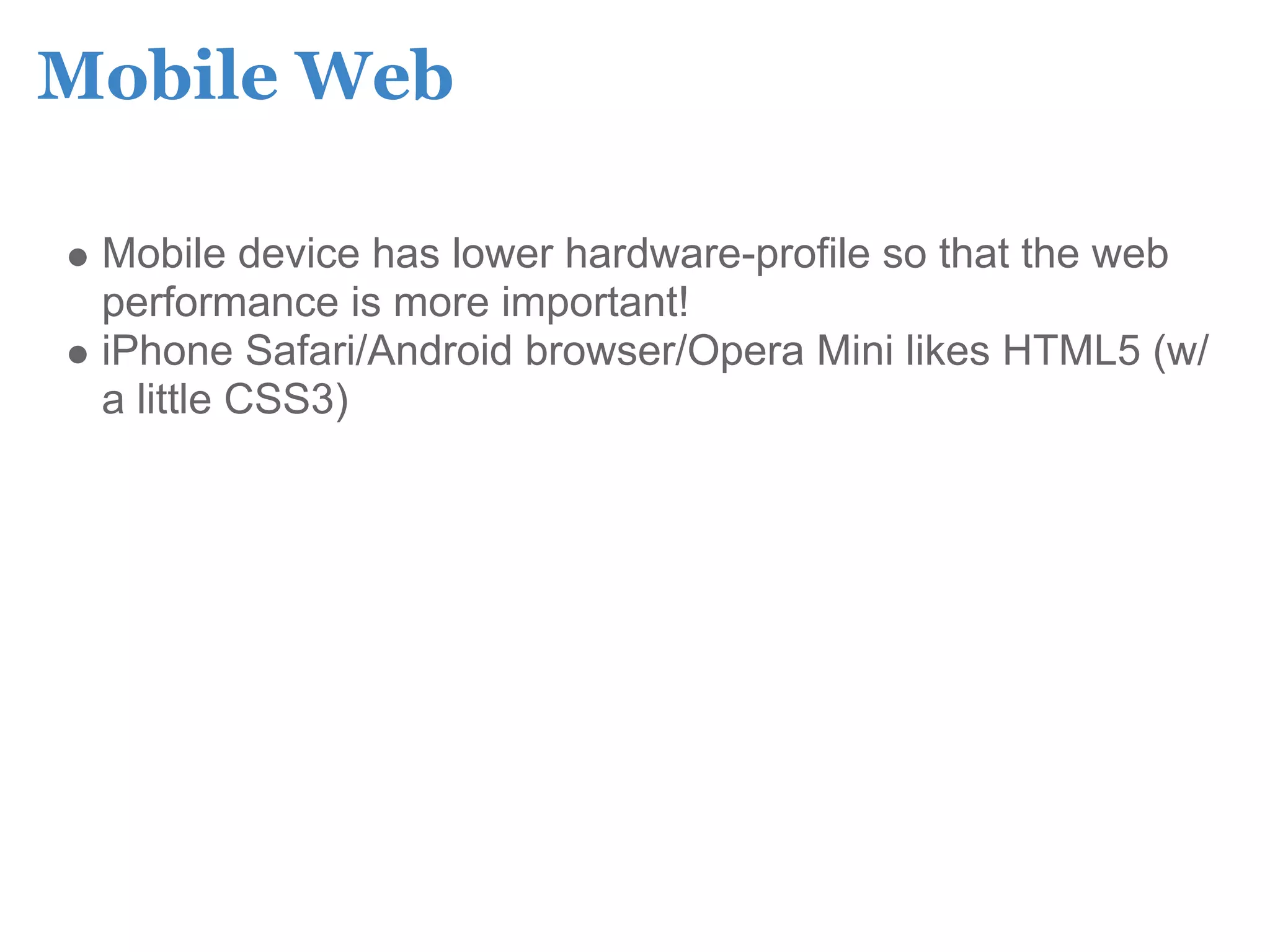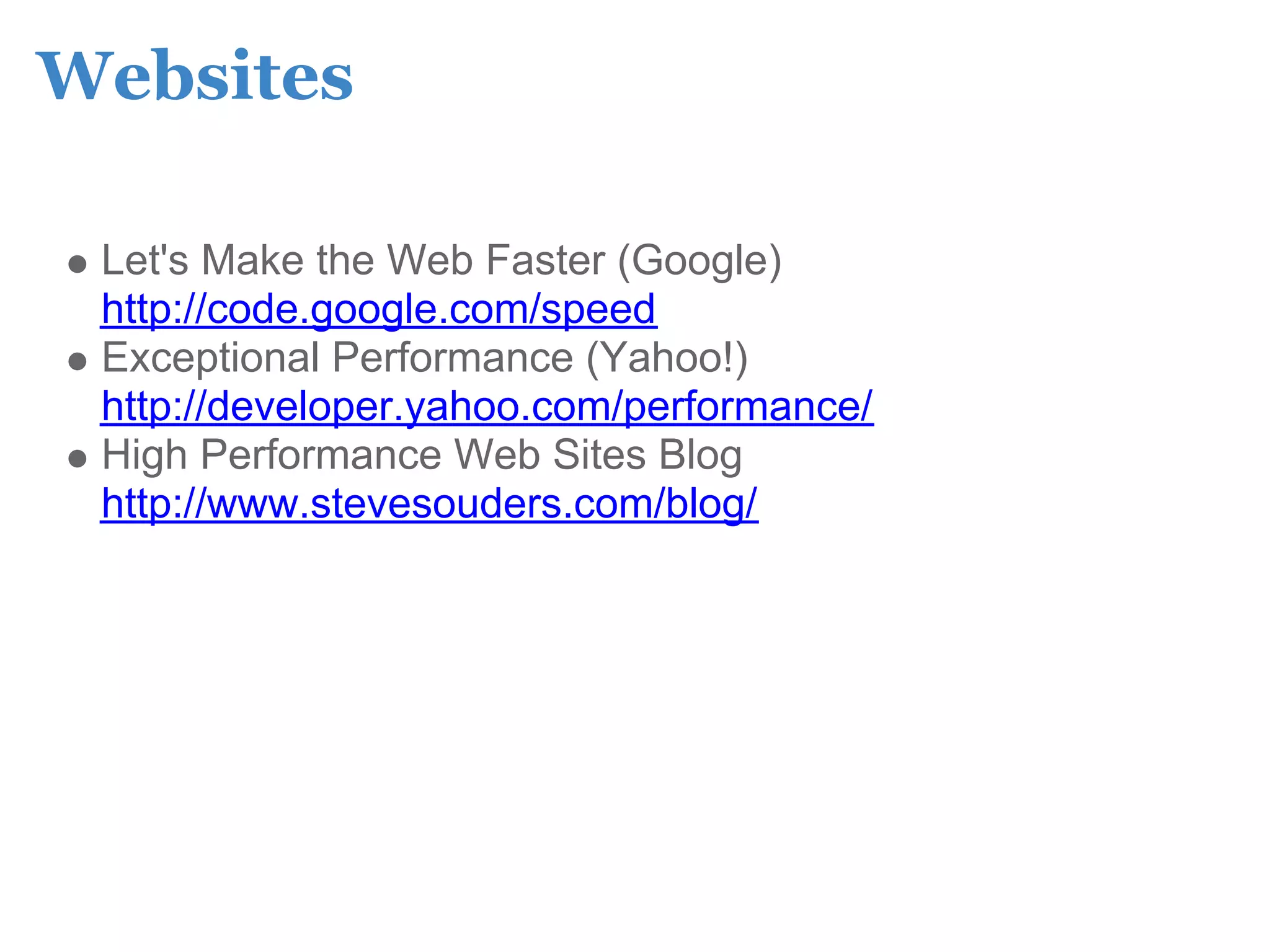This document discusses tuning web performance from a frontend perspective. It covers the impact of performance on user experience, development tools for optimization like Firebug and Chrome DevTools, and various techniques for website optimization including reducing requests, optimizing images, leveraging caching, minimizing JavaScript, and improving loading efficiency. The goal is to provide an overview of concepts and tools for optimizing frontend performance.

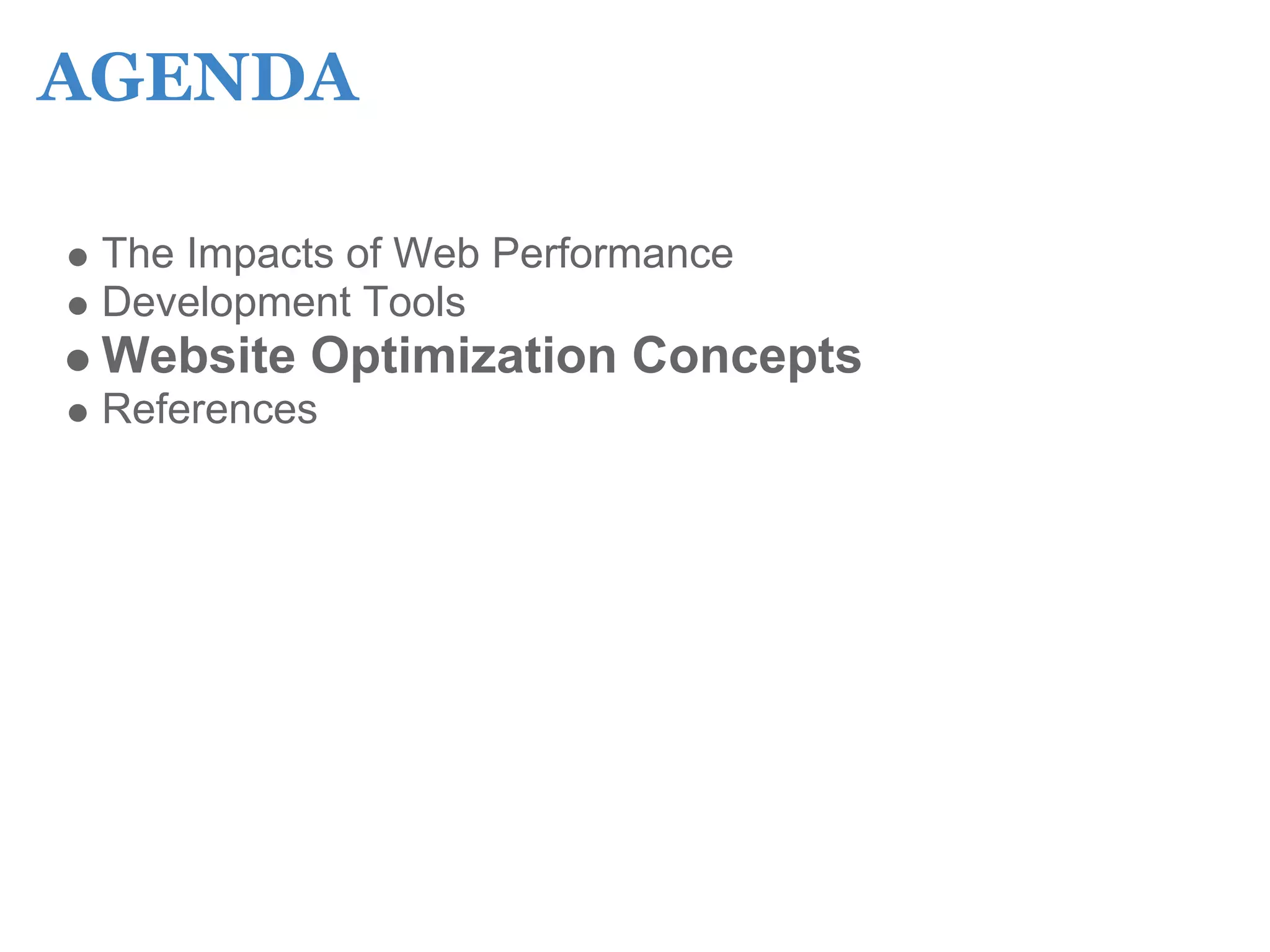
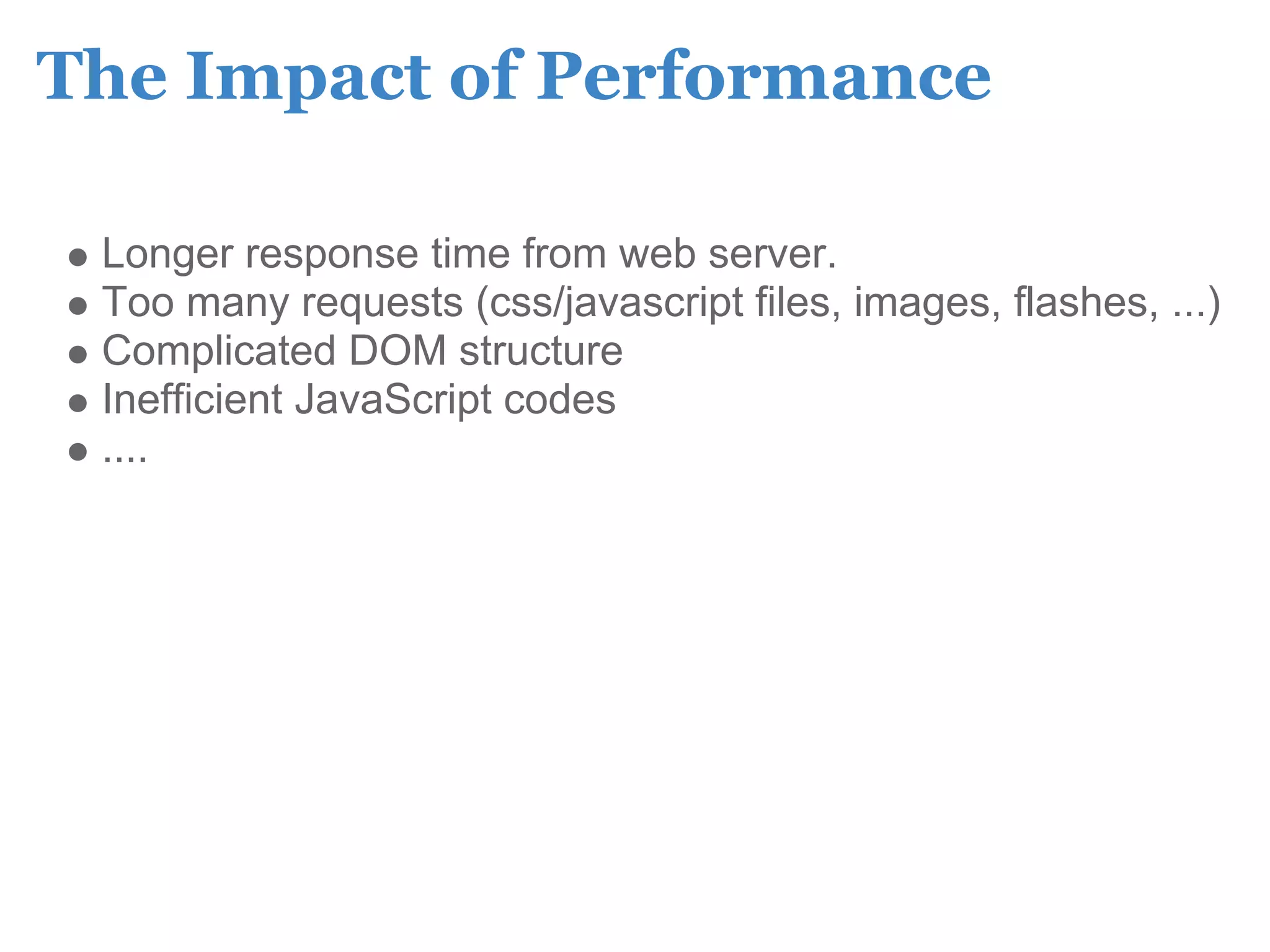
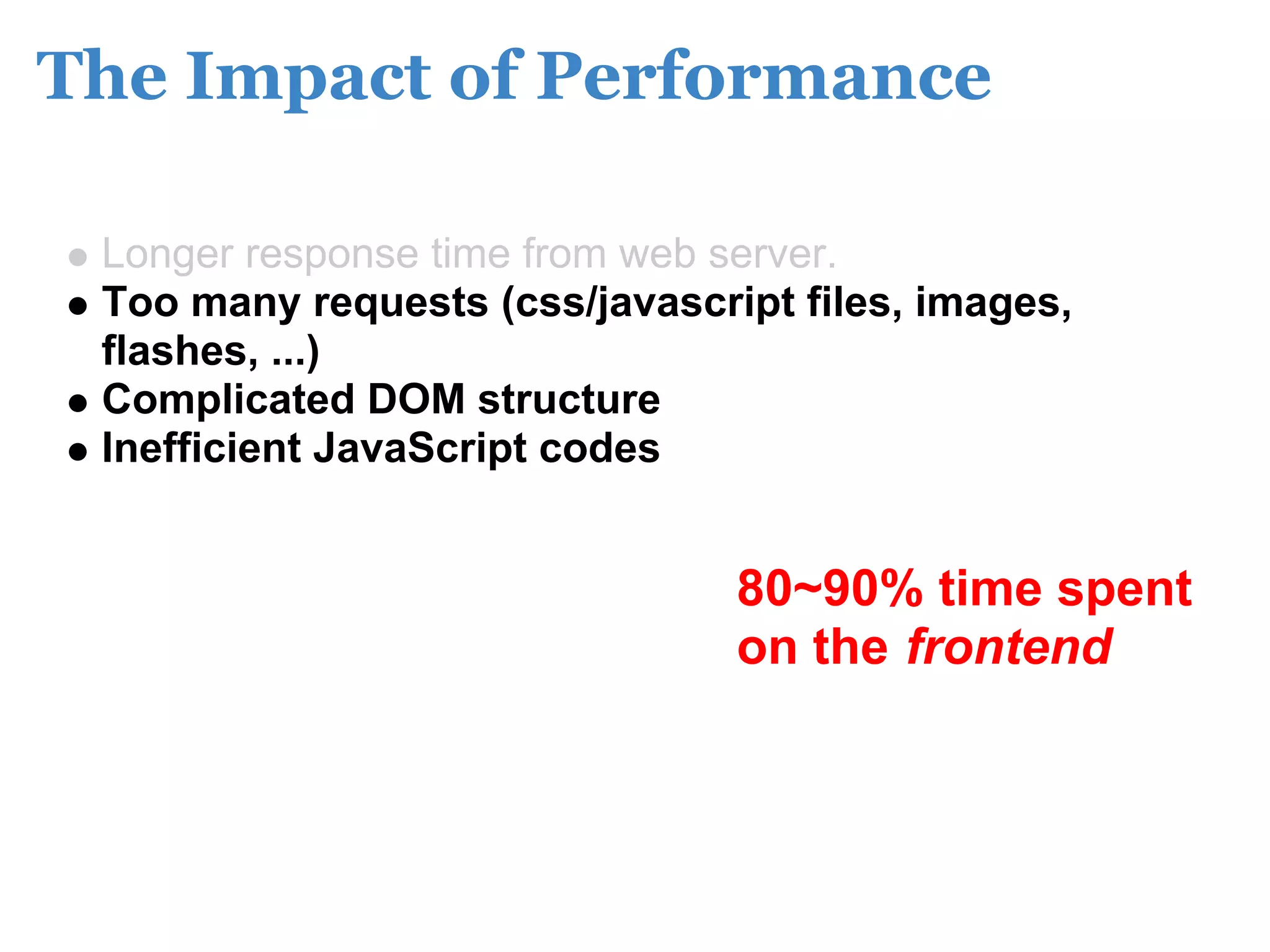
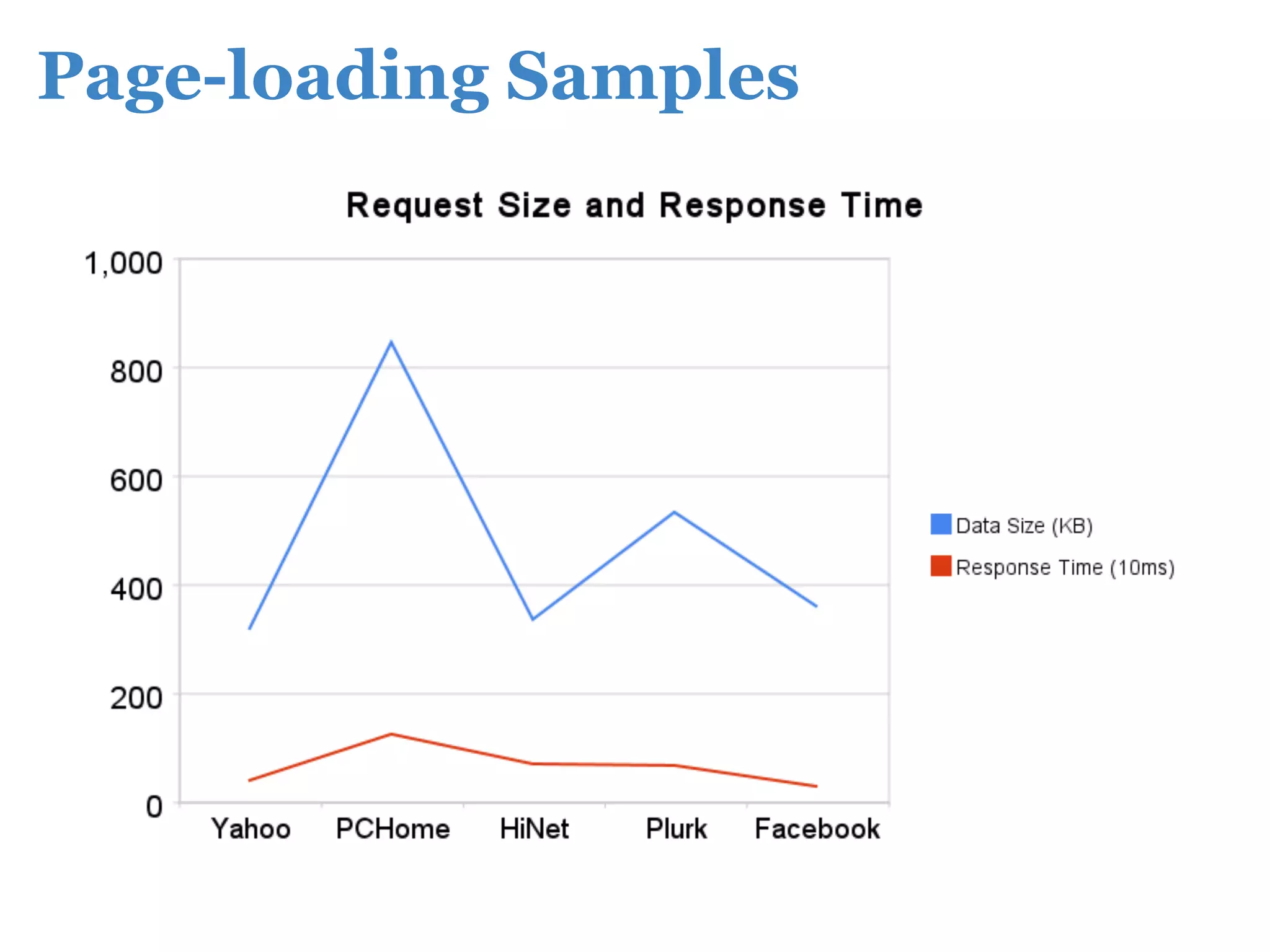
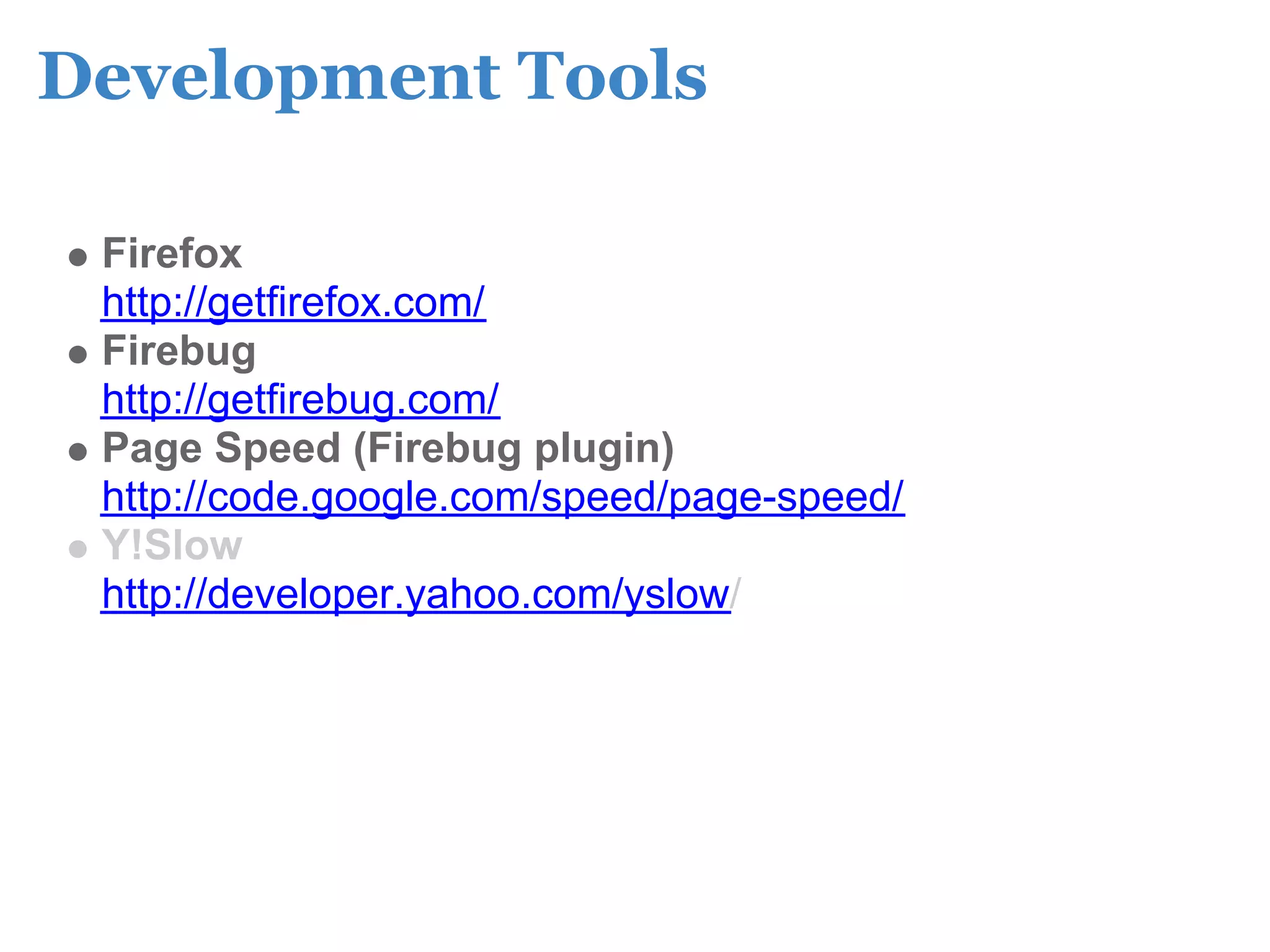
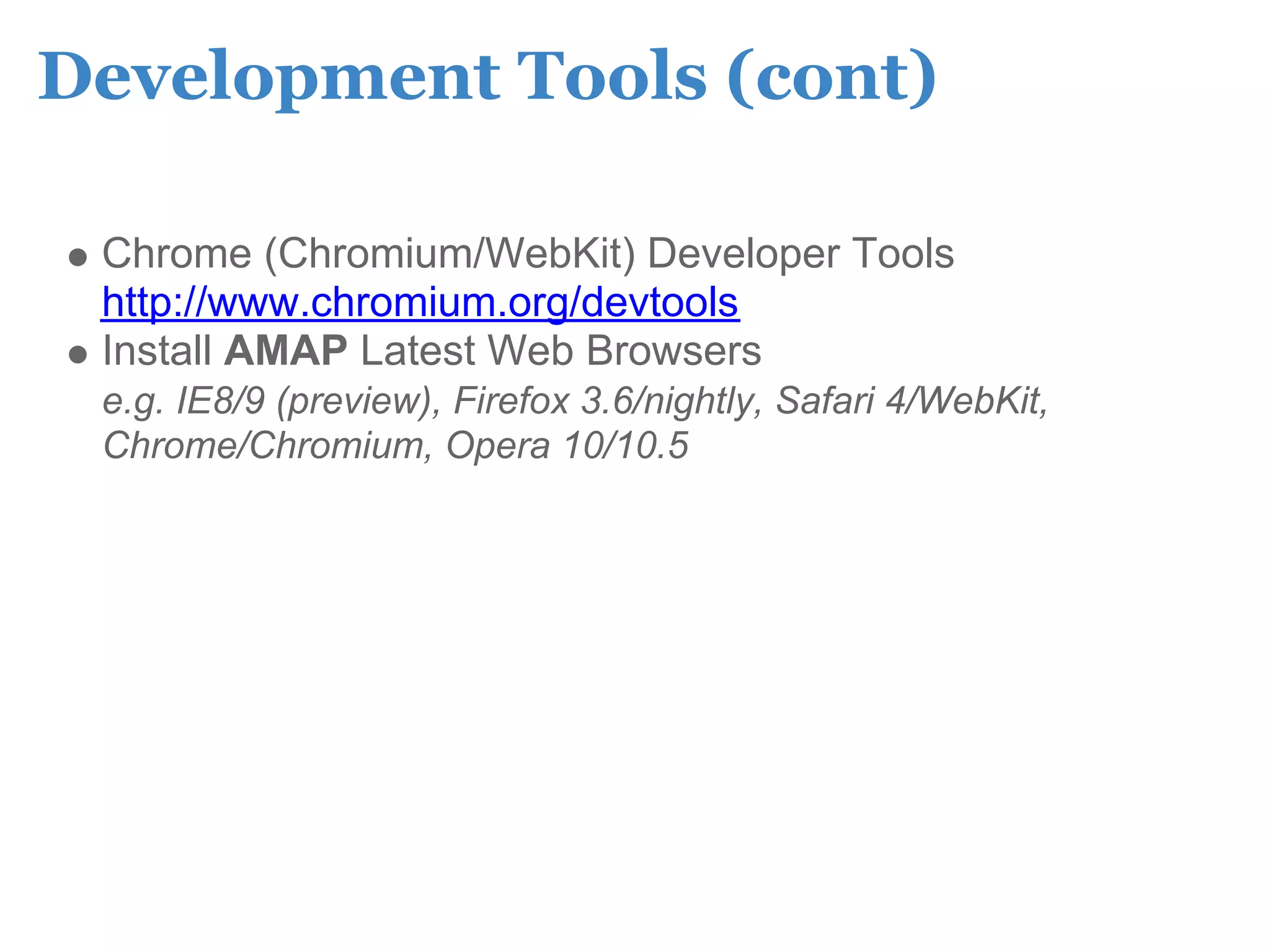
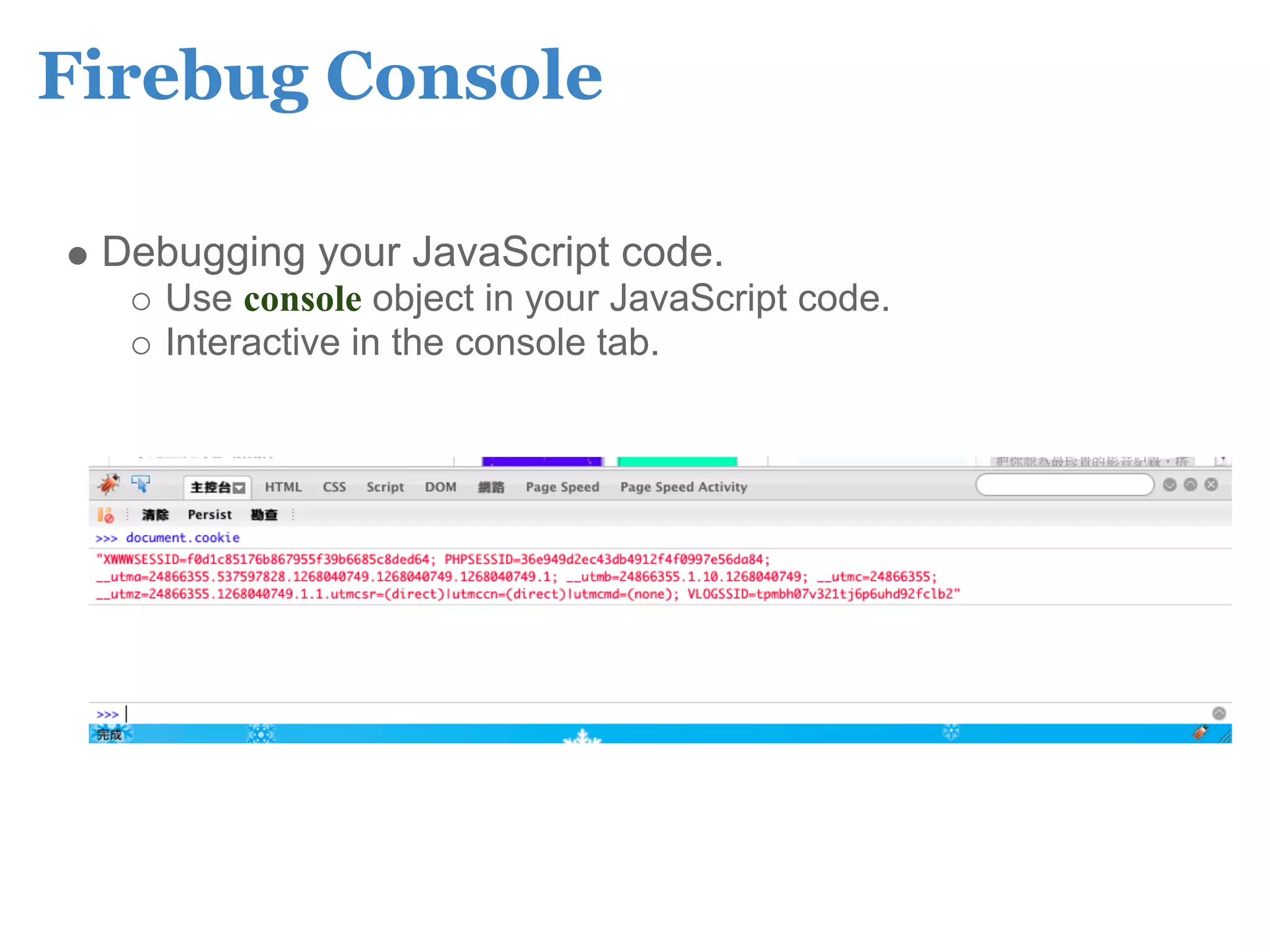
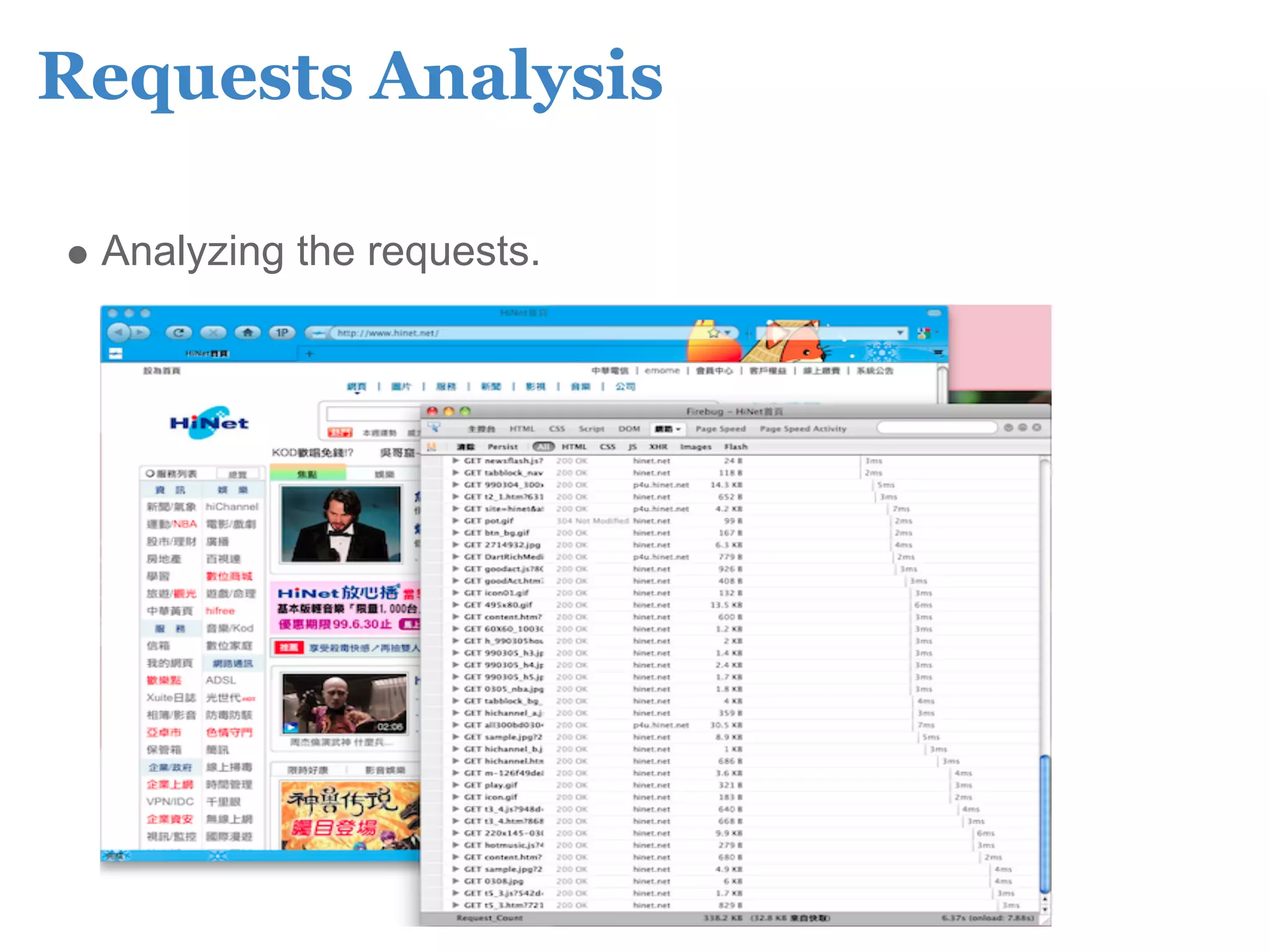
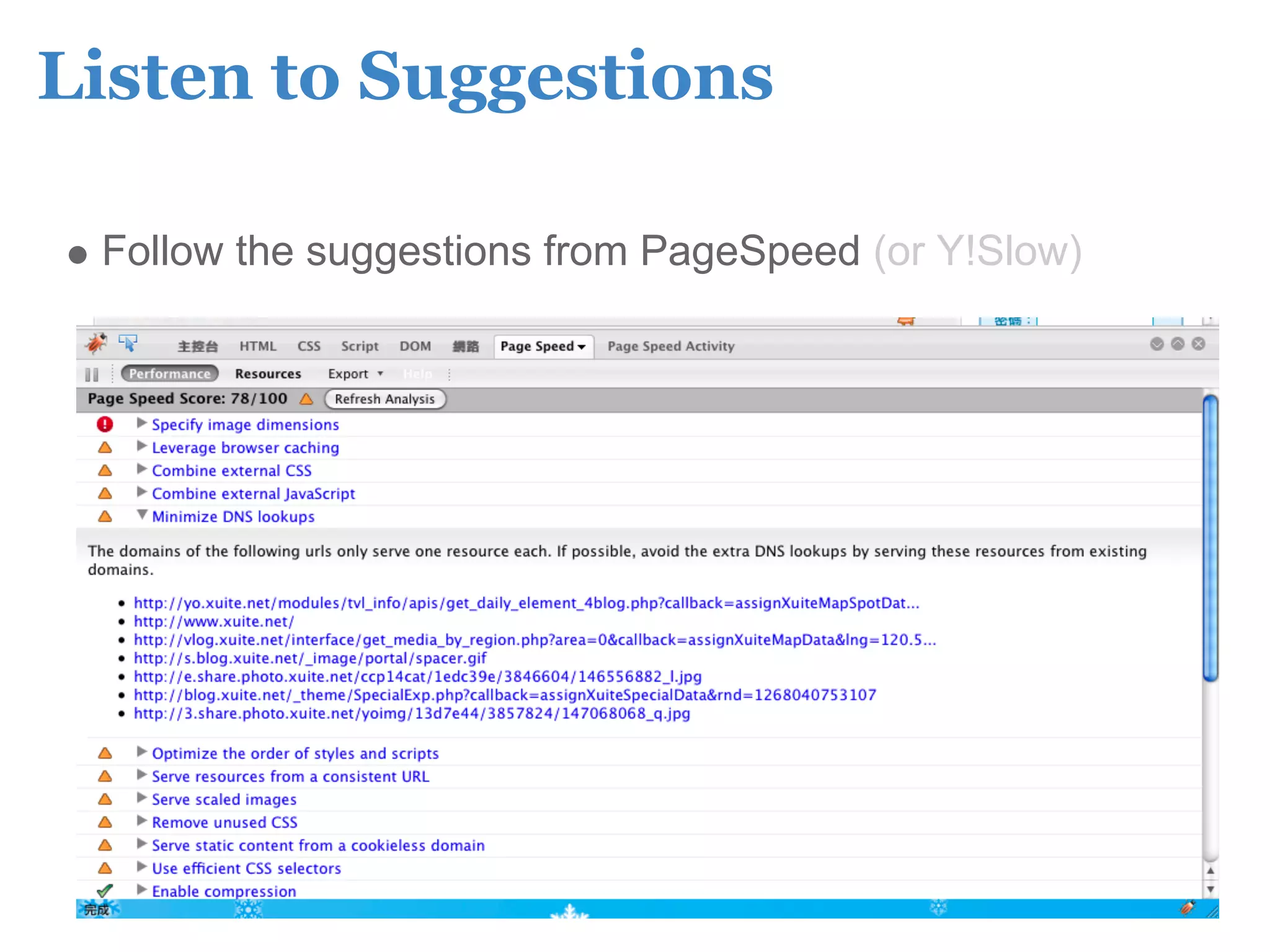
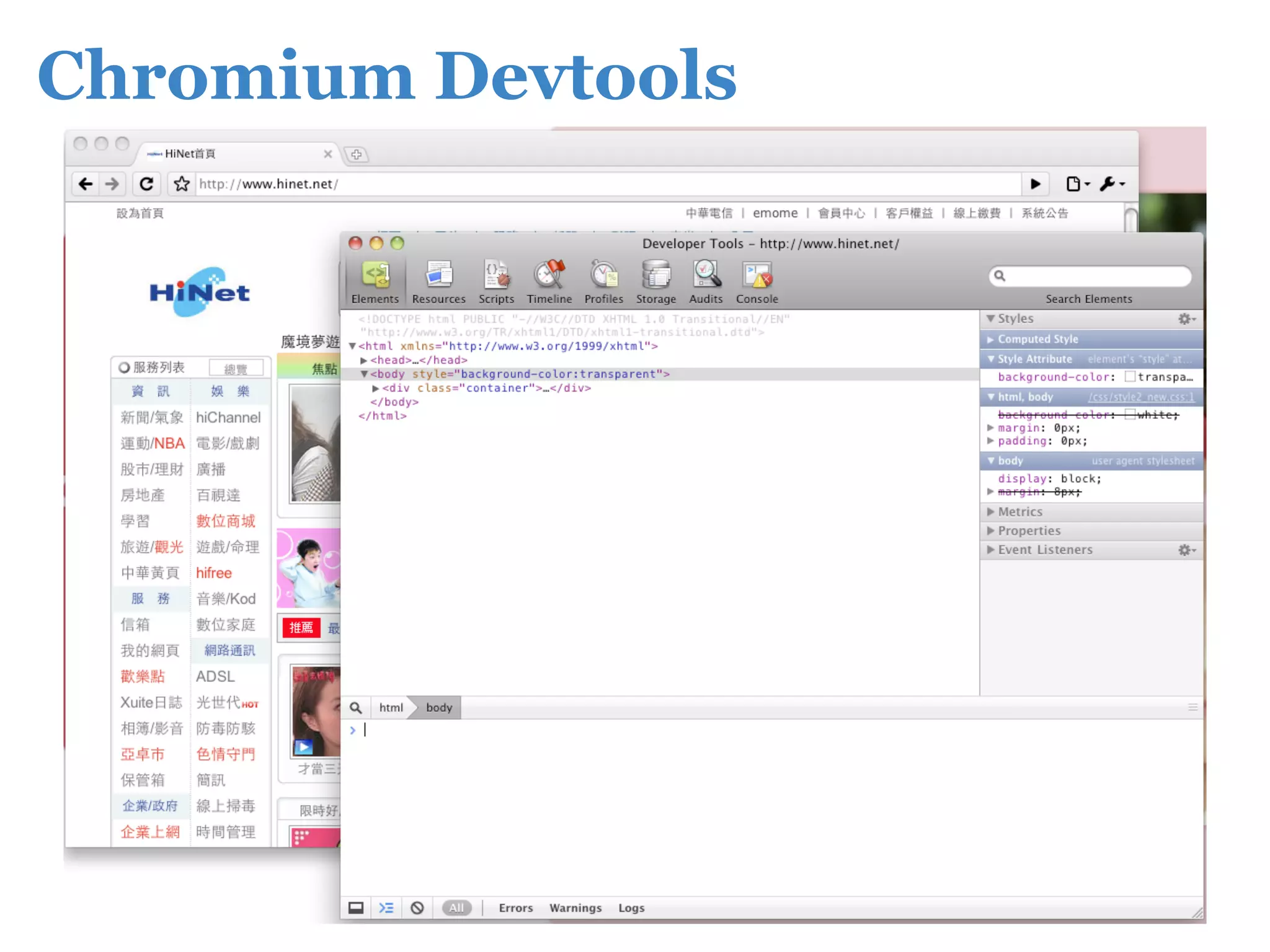
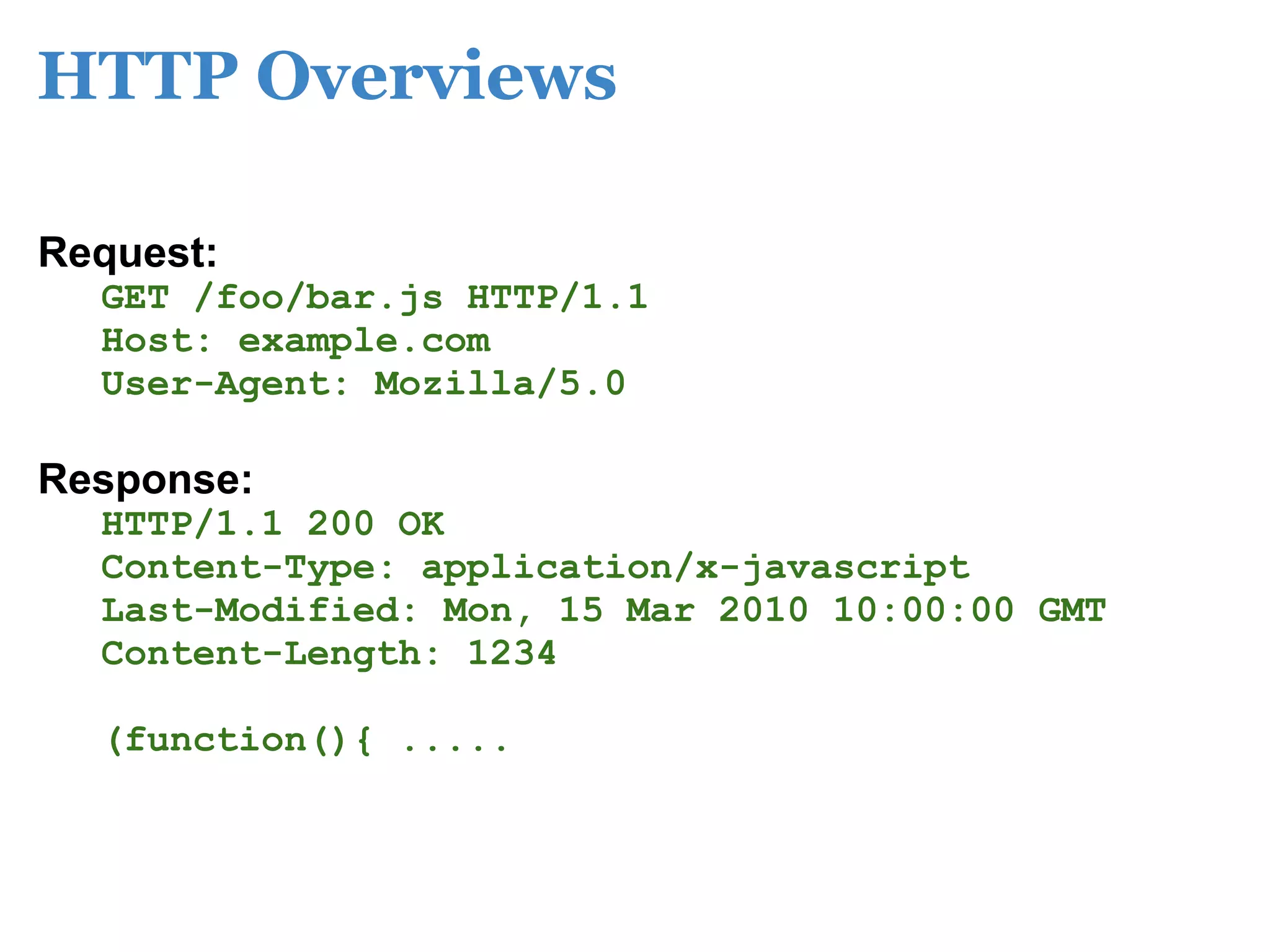
![HTTP Reuqest Example
$ telnet ajax.googleapis.com 80
Trying 74.125.153.95...
Connected to googleapis-ajax.l.google.com.
Escape character is '^]'.
GET /ajax/libs/jquery/1.4.2/jquery.min.js HTTP/1.1
Host: ajax.googleapis.com
User-Agent: Mozilla/5.0 (Macintosh; U; Intel Mac OS X 10.6; zh-TW; rv:1.9.2)
Gecko/20100115 Firefox/3.6 GTB7.0
Accept-Encoding: gzip,deflate
HTTP/1.1 200 OK
Content-Type: text/javascript; charset=UTF-8
Last-Modified: Mon, 15 Feb 2010 23:30:12 GMT
Date: Mon, 15 Mar 2010 08:39:18 GMT
Expires: Tue, 15 Mar 2011 08:39:18 GMT
Vary: Accept-Encoding
X-Content-Type-Options: nosniff
Server: sffe
Content-Encoding: gzip
Cache-Control: public, max-age=31536000
Age: 2497
Content-Length: 24678
X-XSS-Protection: 0
;iw?F???+??m?@ə???v?I։/M???6???????$e???...](https://image.slidesharecdn.com/tuningwebperformance-100326054703-phpapp02/75/Tuning-Web-Performance-13-2048.jpg)
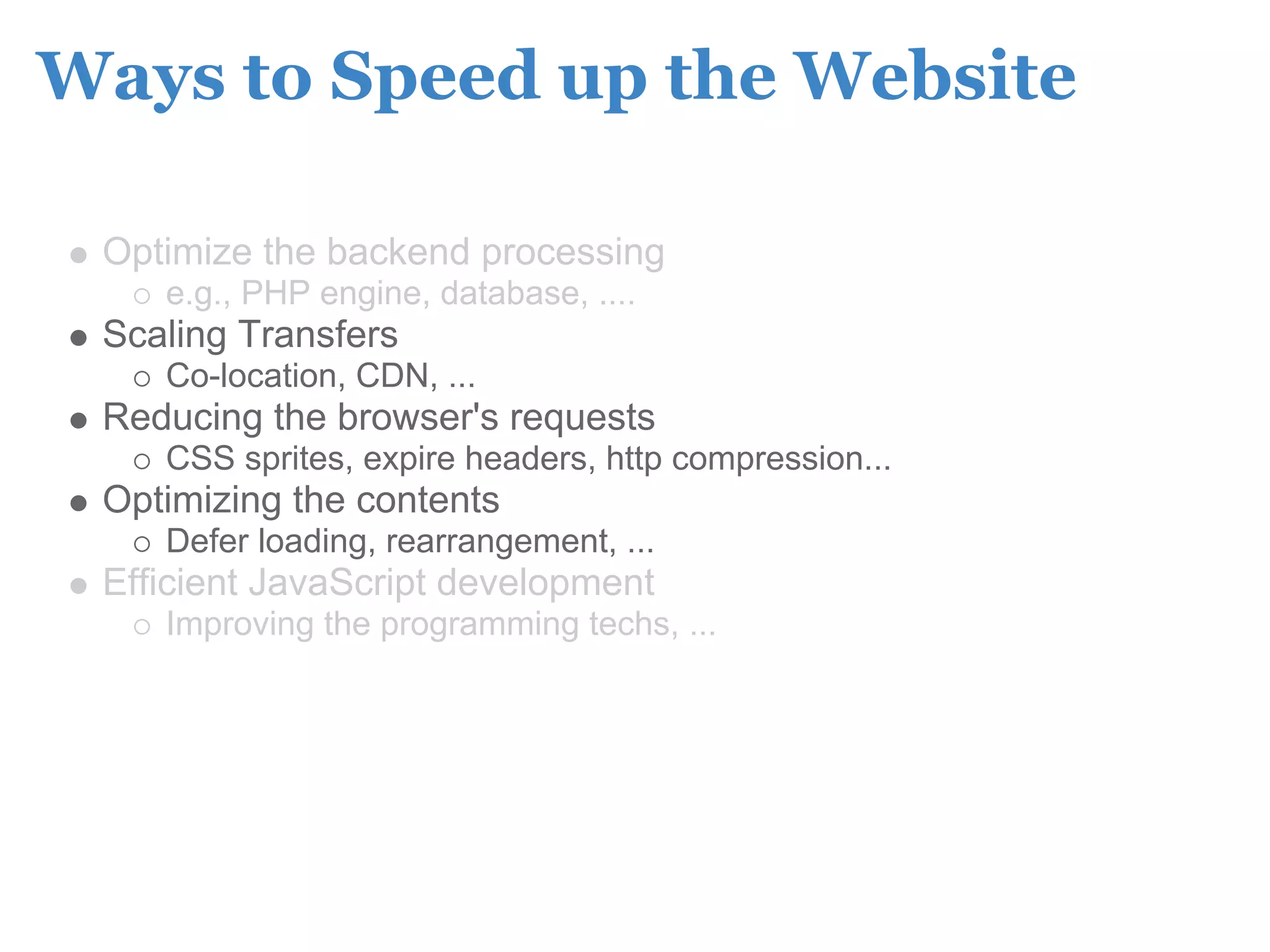
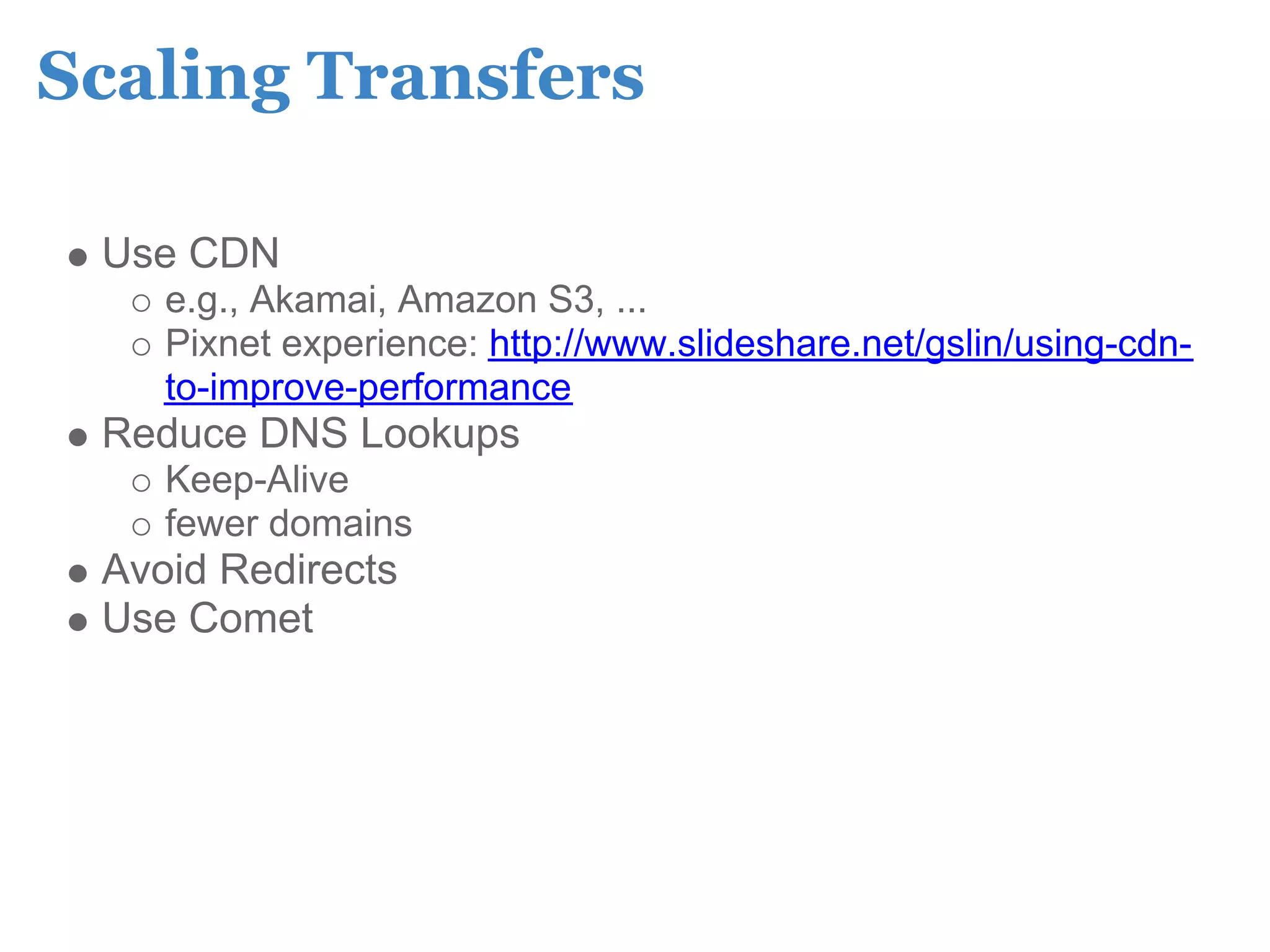
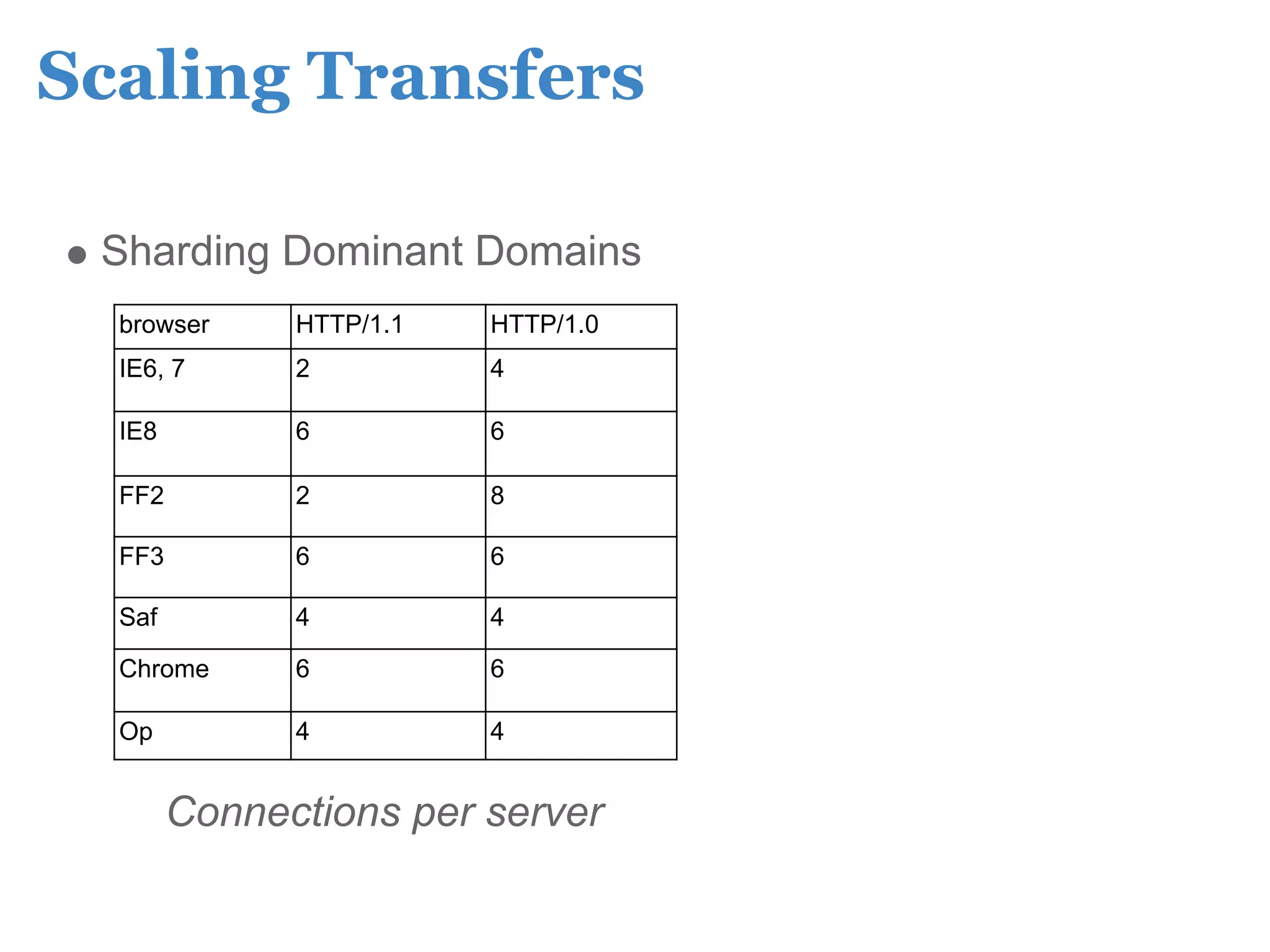

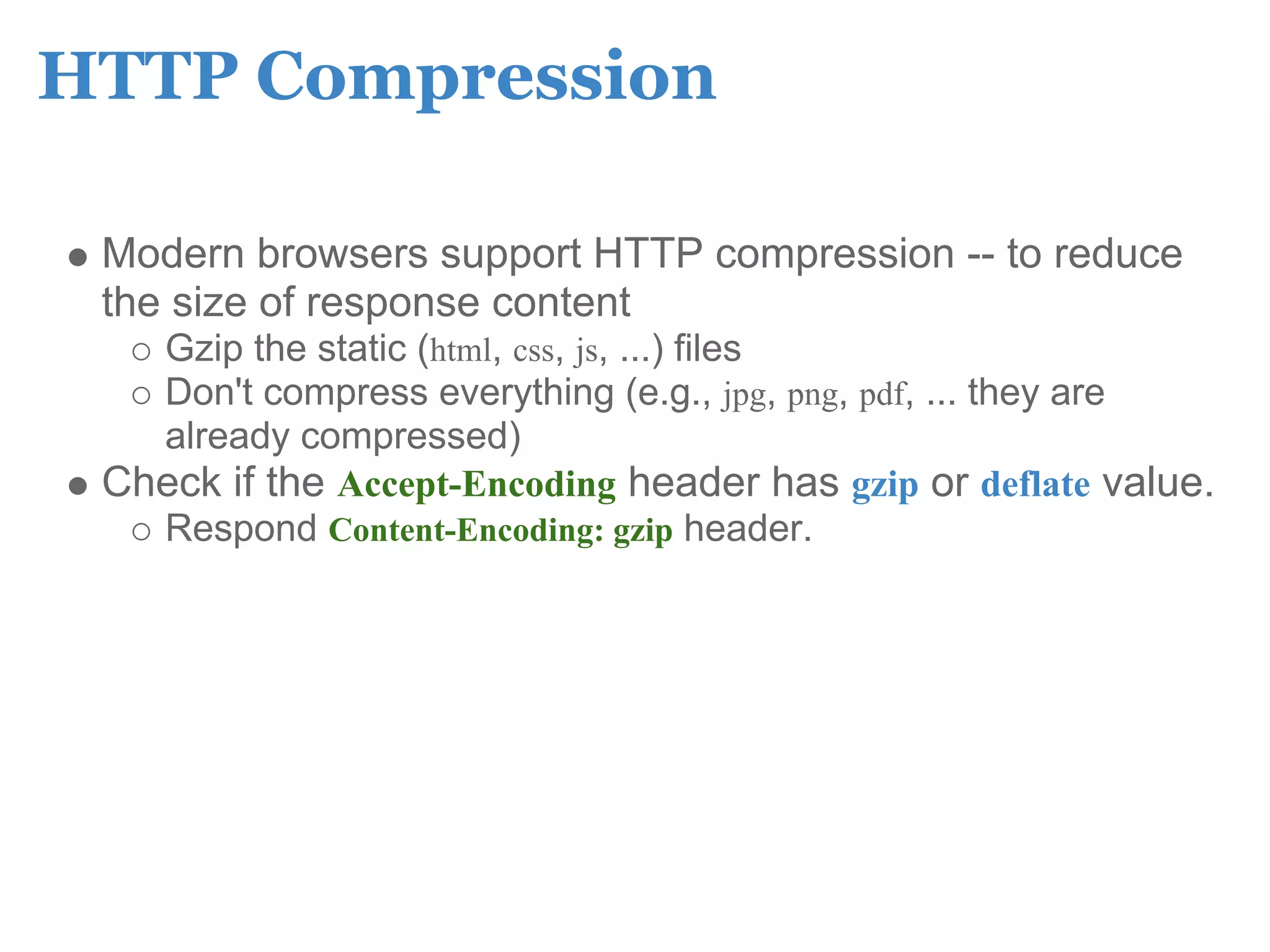
![HTTP Compression
In Apache httpd server, use mod_gzip (httpd 1.3) or
mod_deflate (httpd 2.x).
[mod_deflate]
AddOutputFilterByType DEFLATE text/html text/css
application/x-javascript
Problems:
Proxy may cache uncompressed content
Add Vary: Accept-Encoding header
IE6 bug: Q312496, Q313712](https://image.slidesharecdn.com/tuningwebperformance-100326054703-phpapp02/75/Tuning-Web-Performance-19-2048.jpg)
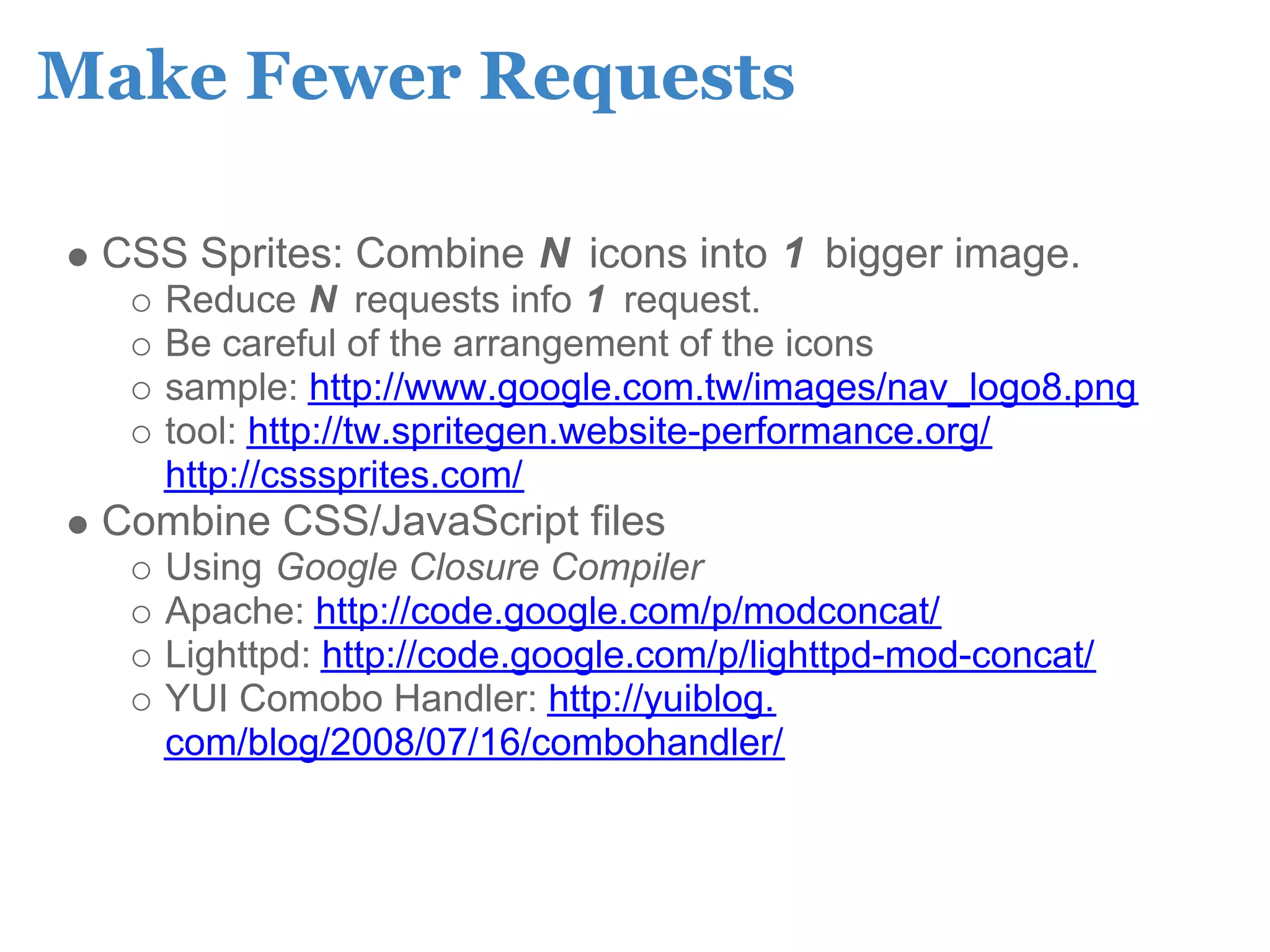
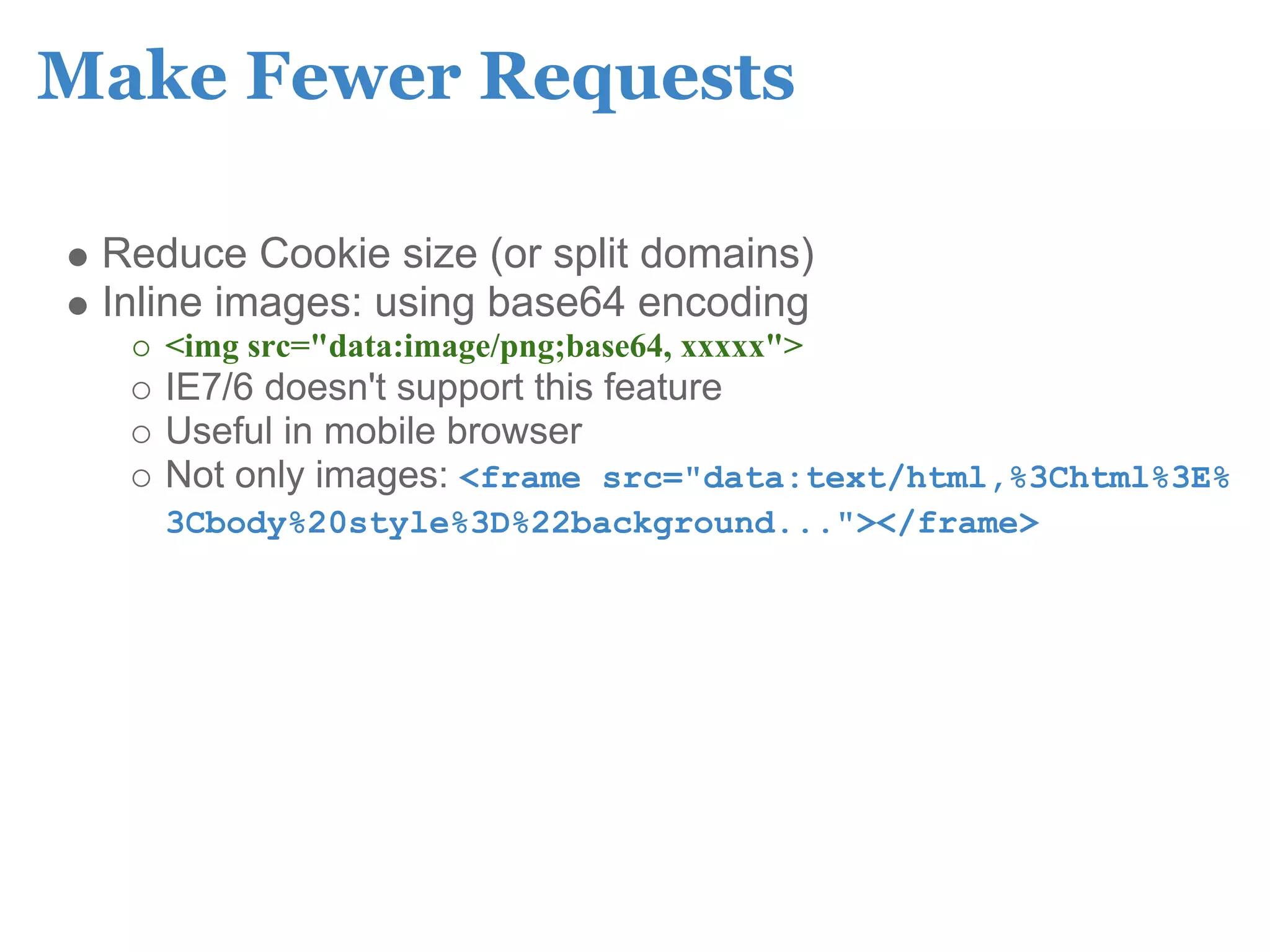
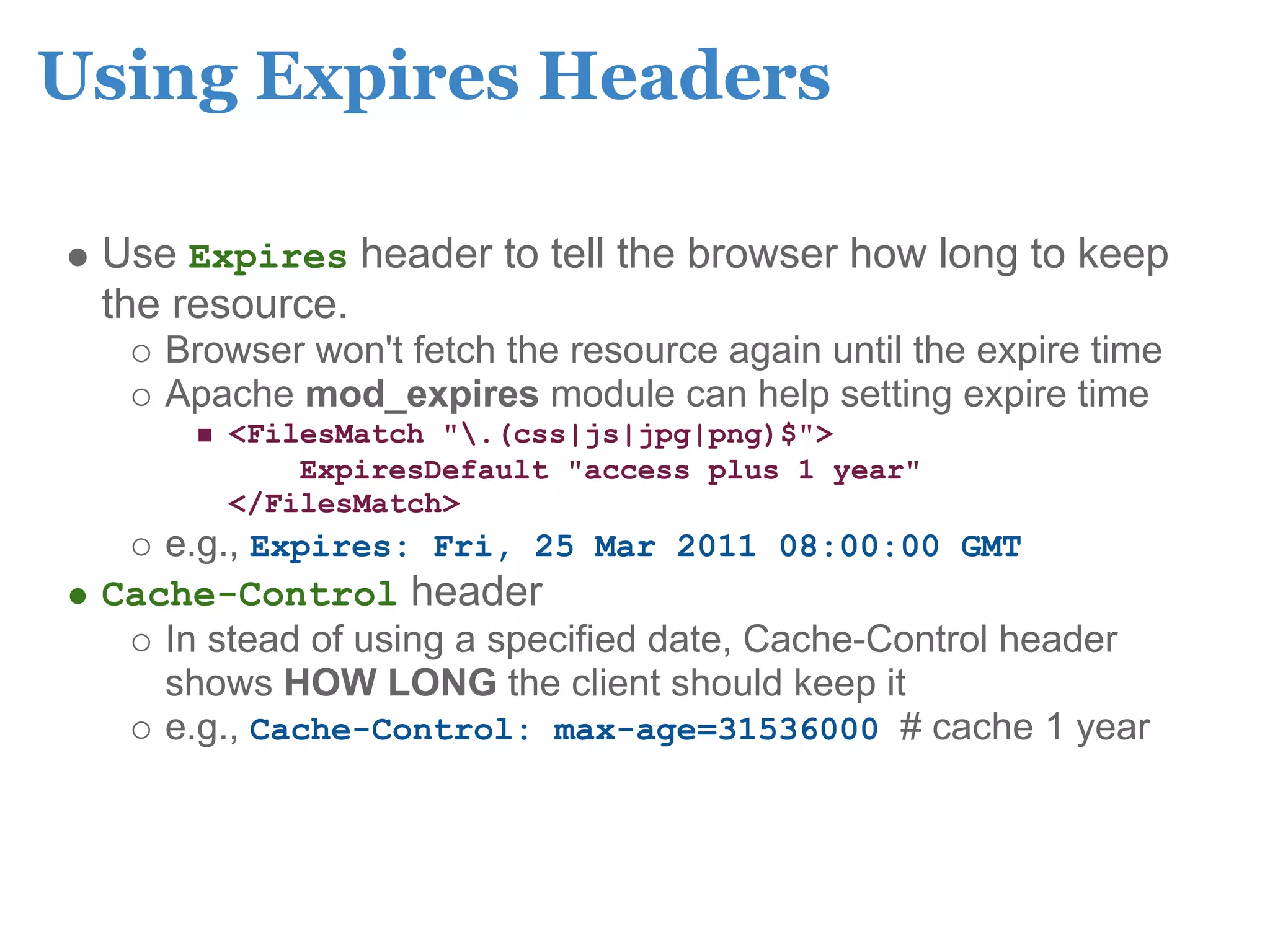
![Using Last-Modified Headers
Use Last-Modified header to tell the browser the last modified
time of the resource.
[request] [request]
GET /foo/bar.css HTTP/1.1 GET /foo/bar.css HTTP/1.1
.... ...
If-Modified-Since: Thu, 25 Mar 2010
[response] 10:00:00 GMT
HTTP/1.1 200 OK ...
Content-Type: text/css
Last-Modified: Thu, 25 Mar 2010 10: [response]
00:00 GMT+8 HTTP/1.1 304 Not Modified
.... ...
(empty response body)](https://image.slidesharecdn.com/tuningwebperformance-100326054703-phpapp02/75/Tuning-Web-Performance-23-2048.jpg)
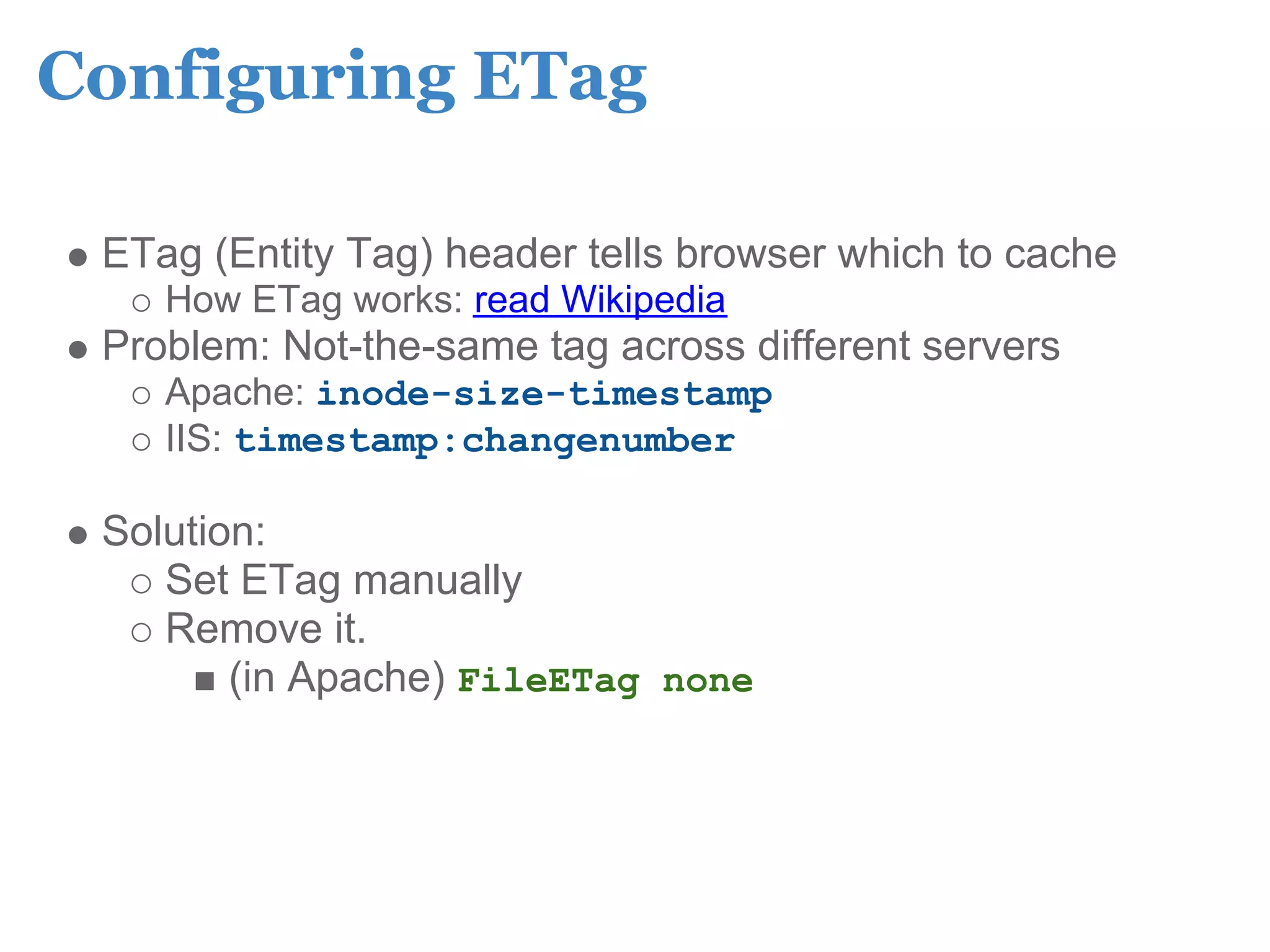
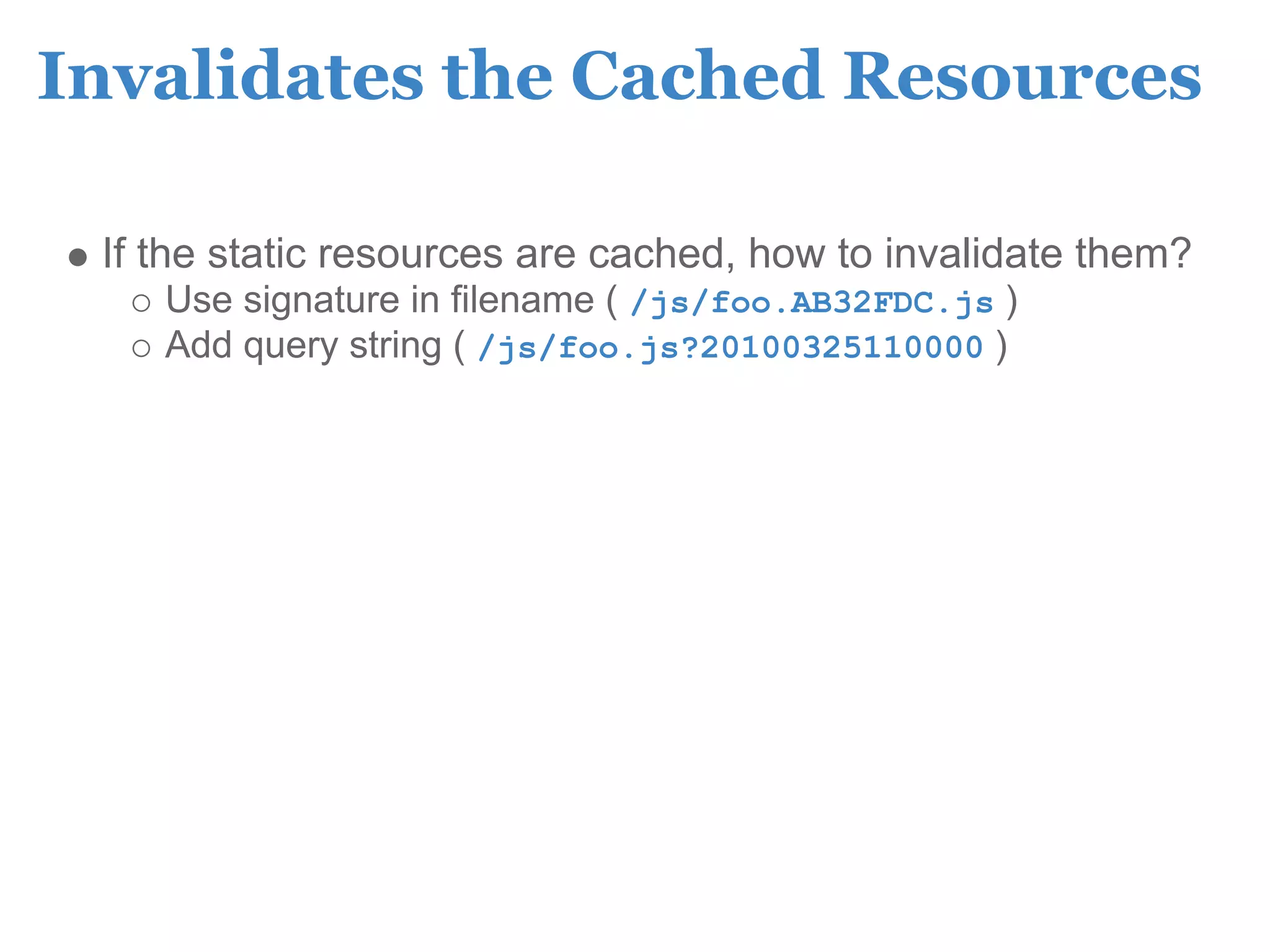

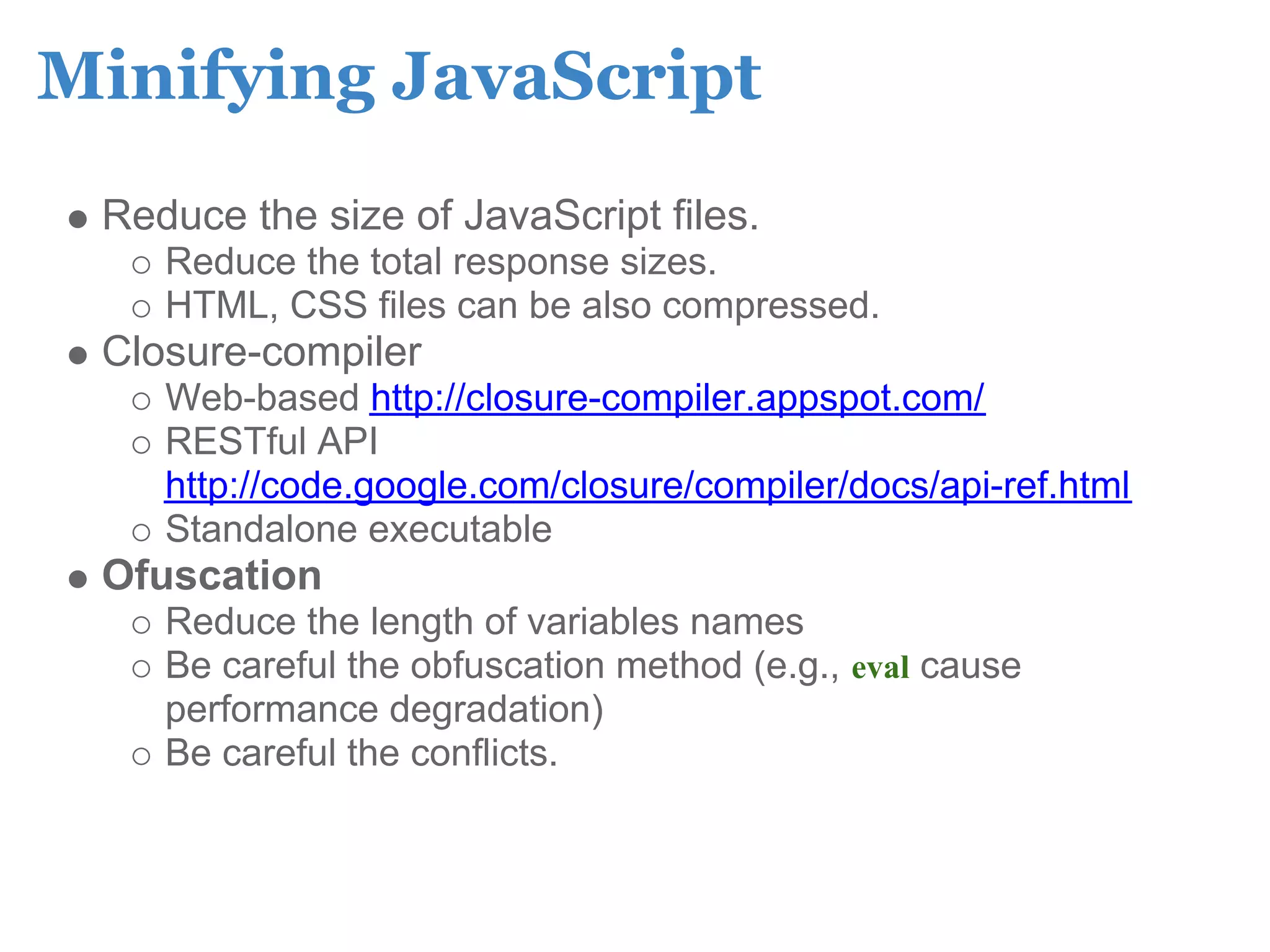
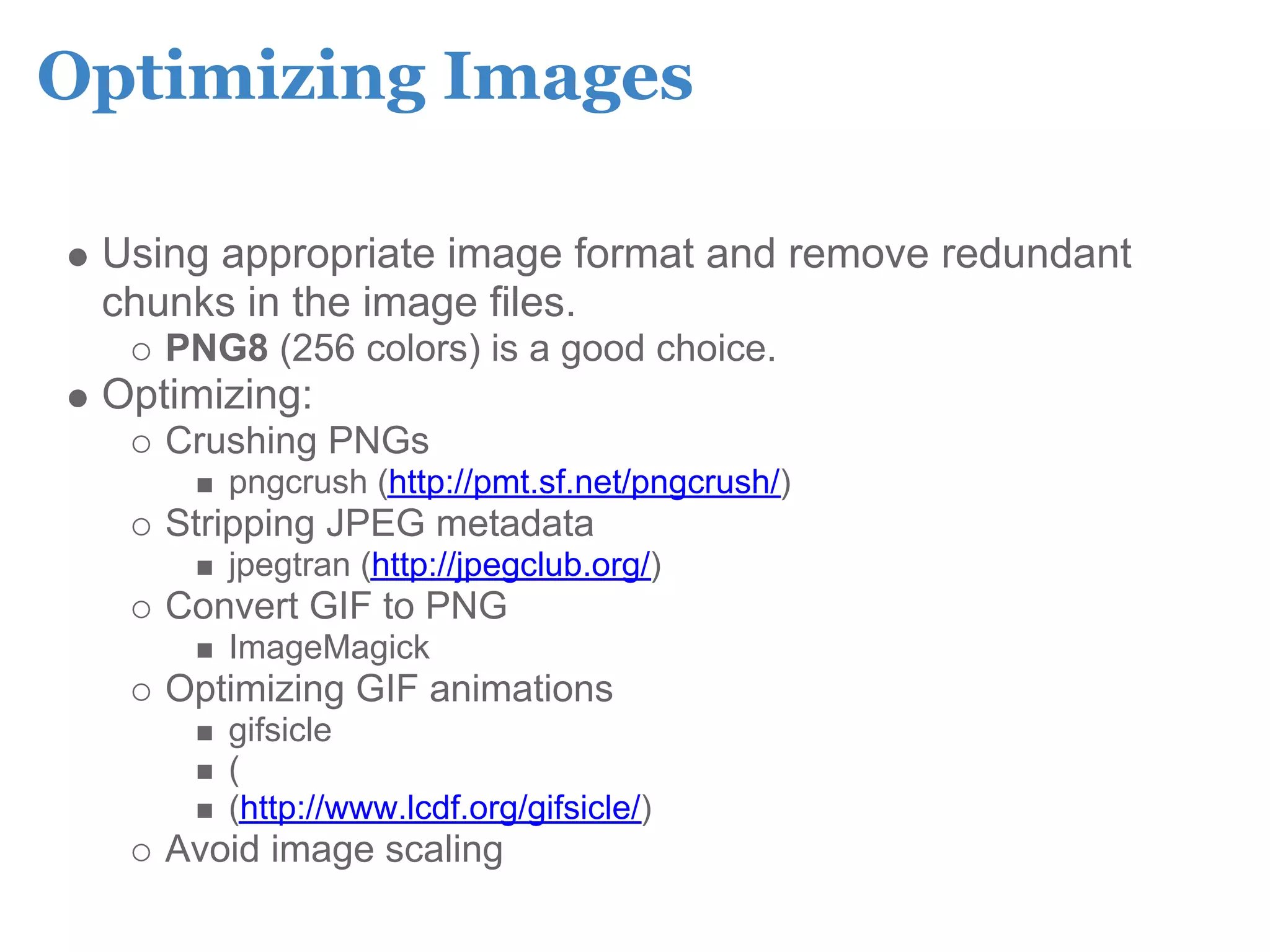
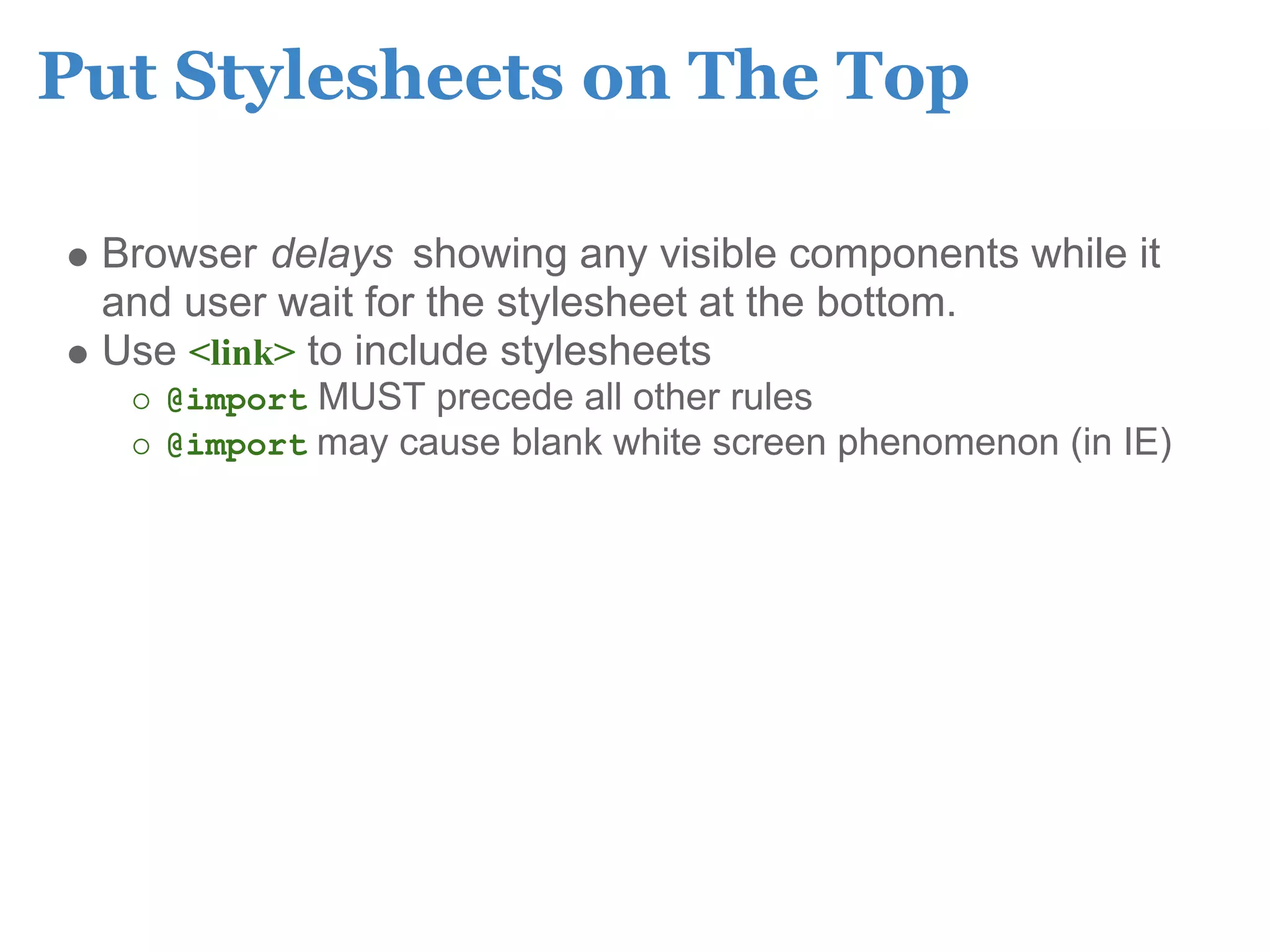
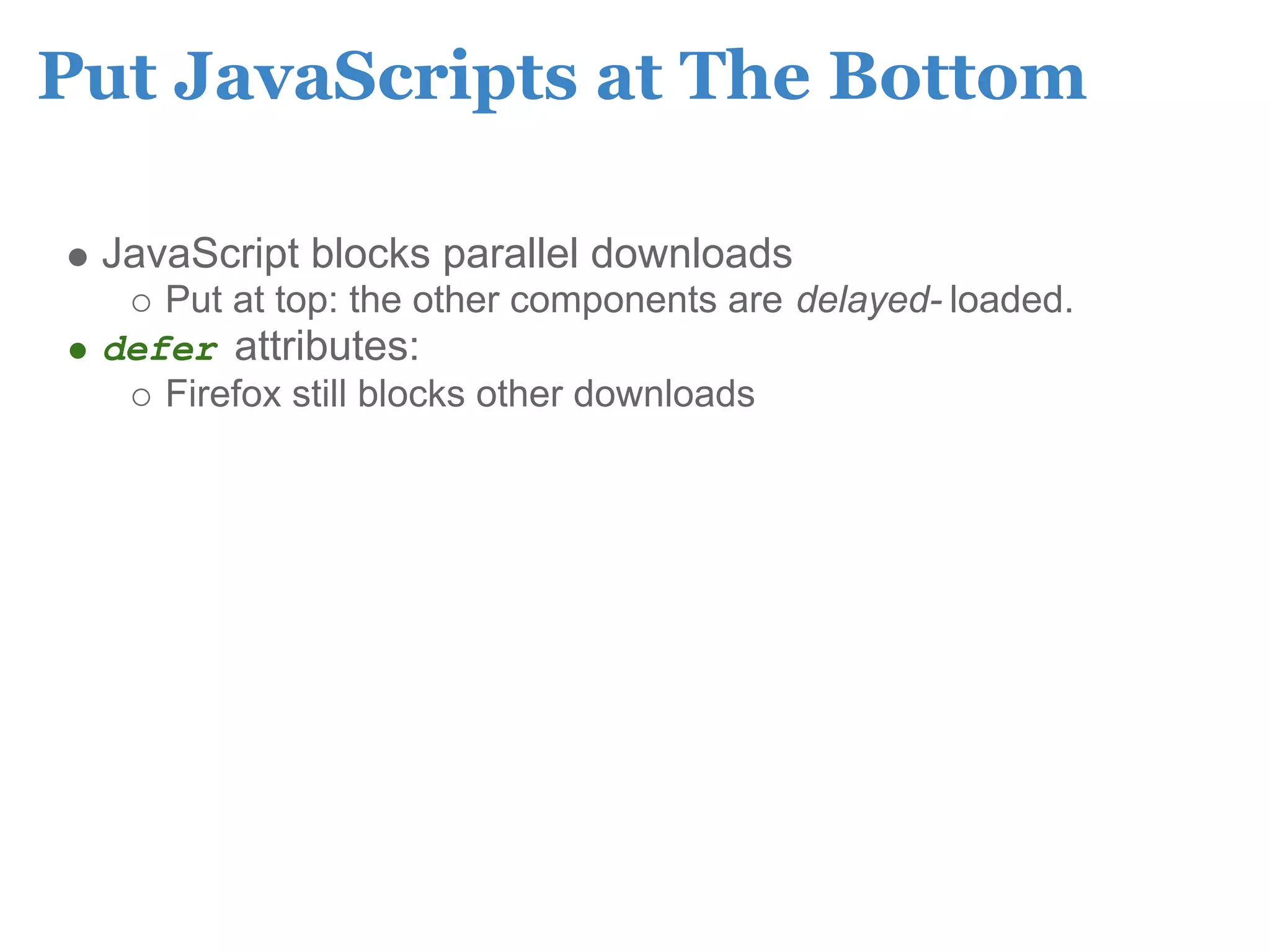
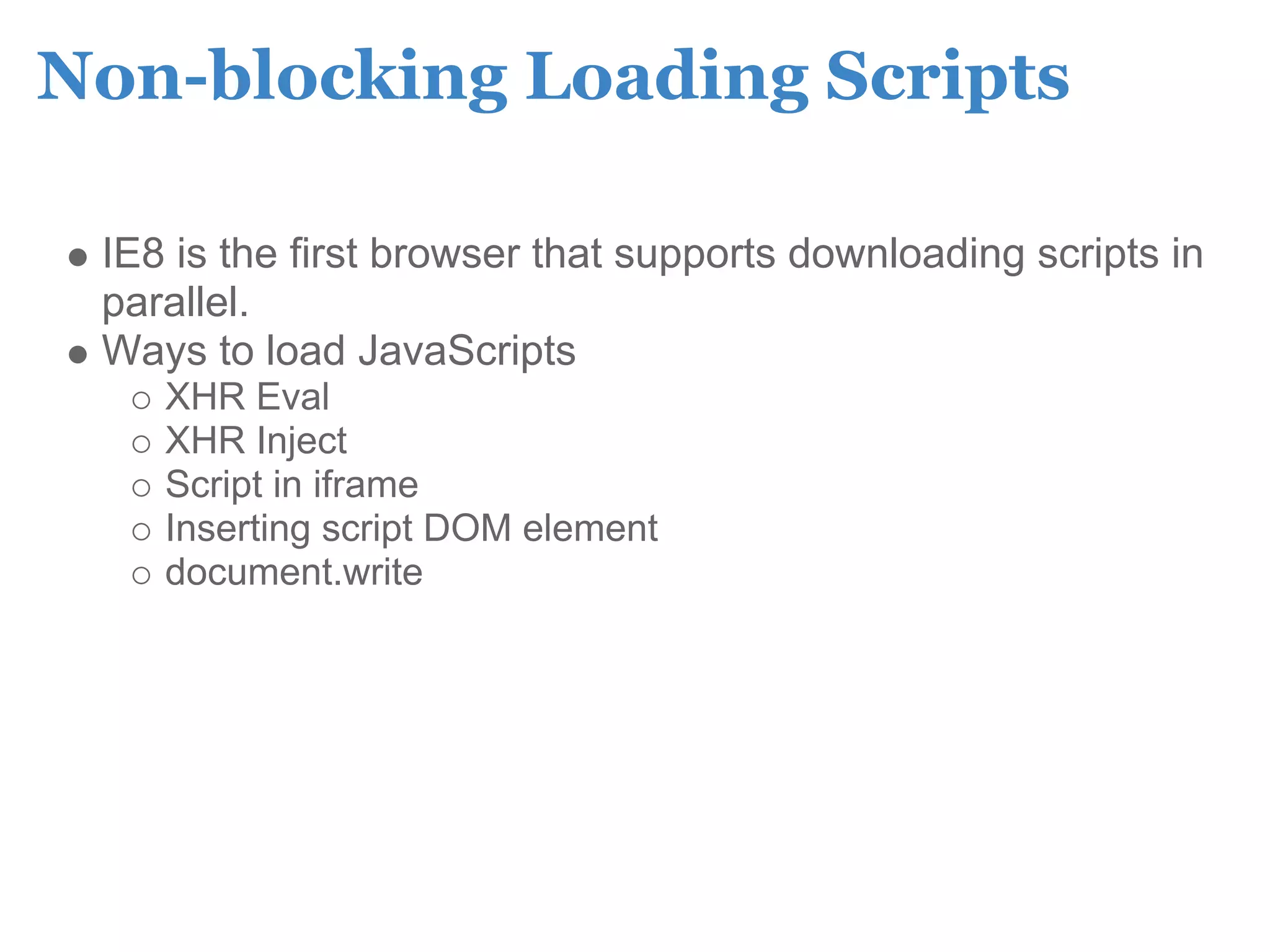
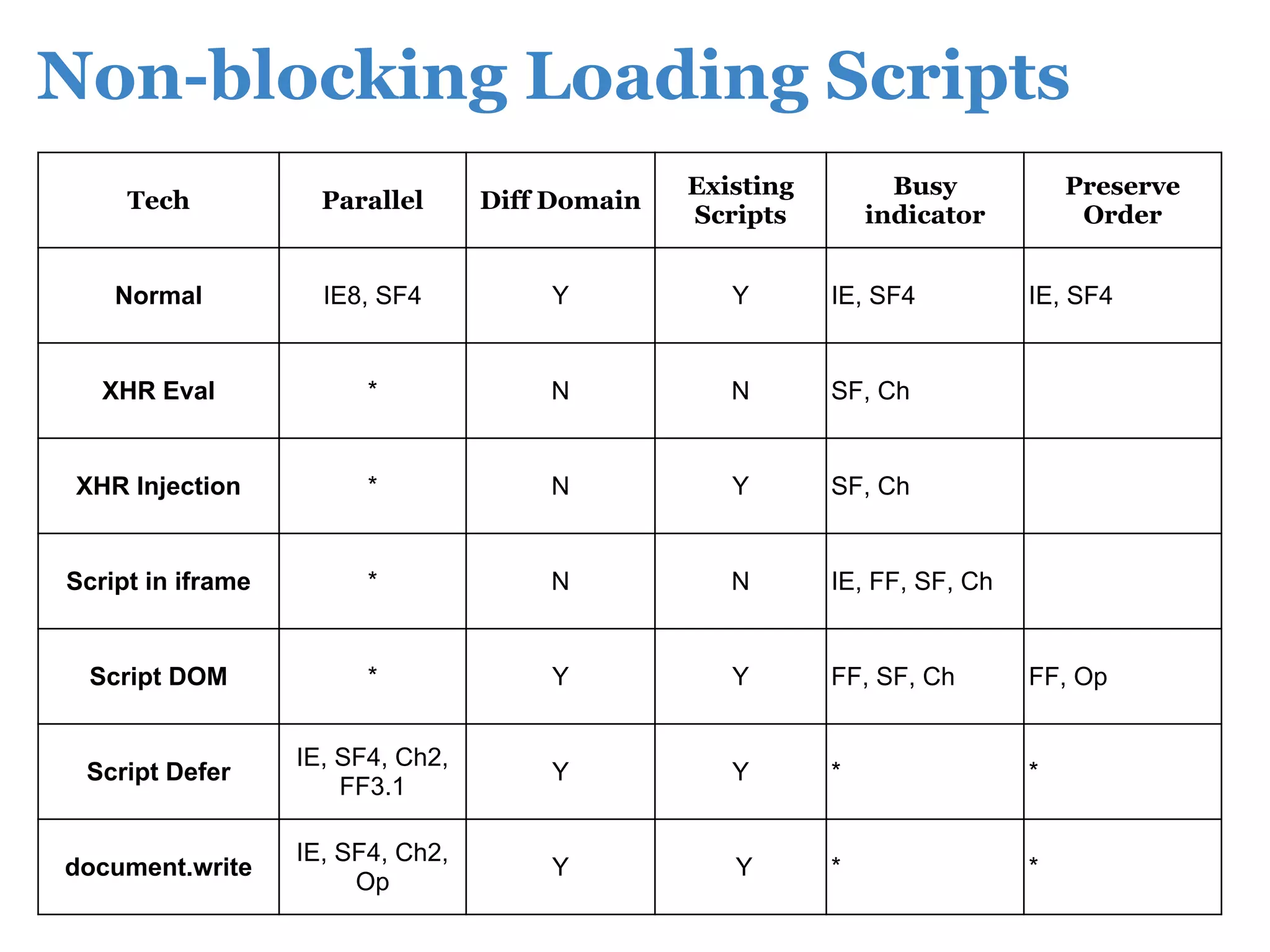
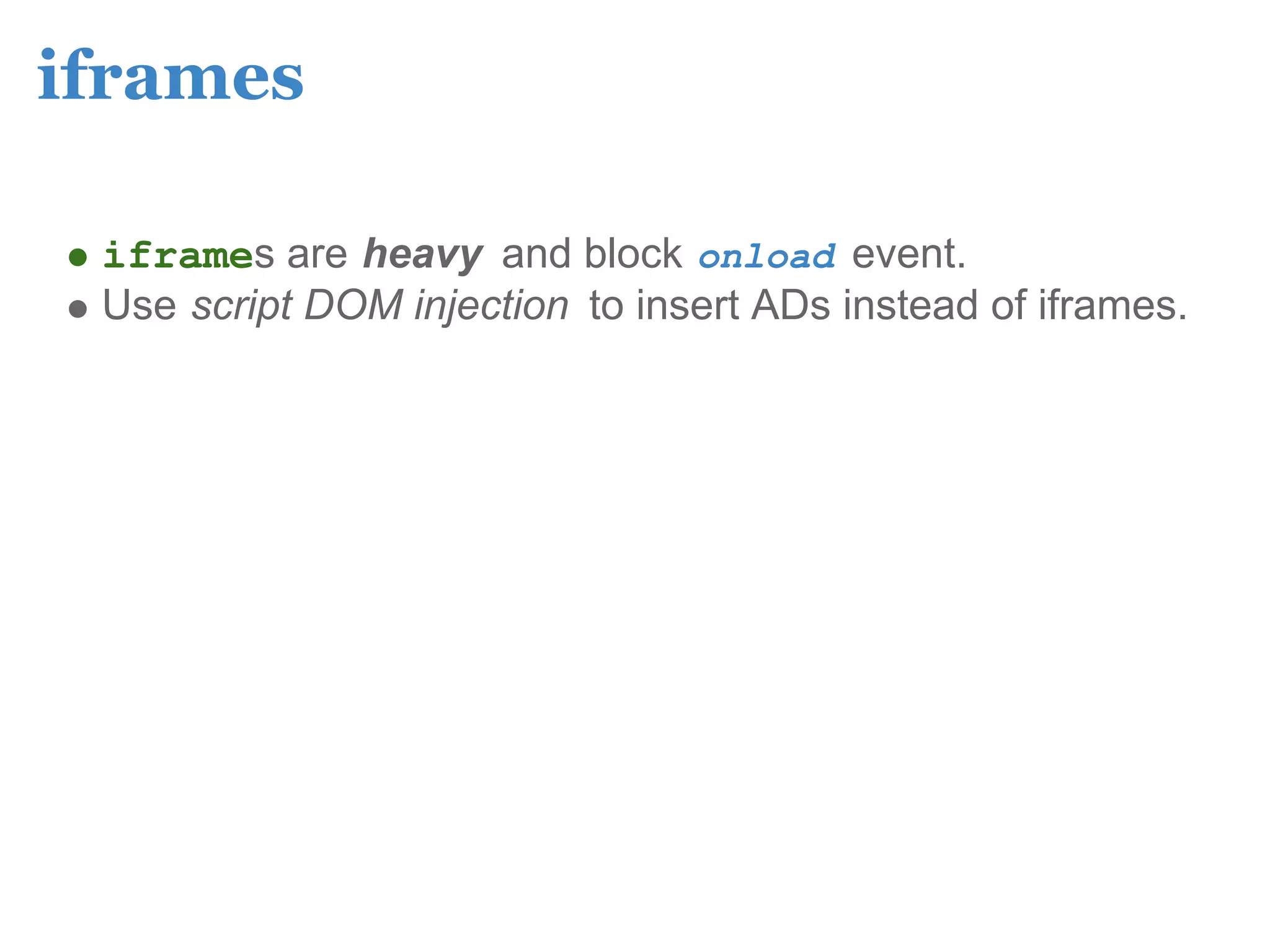

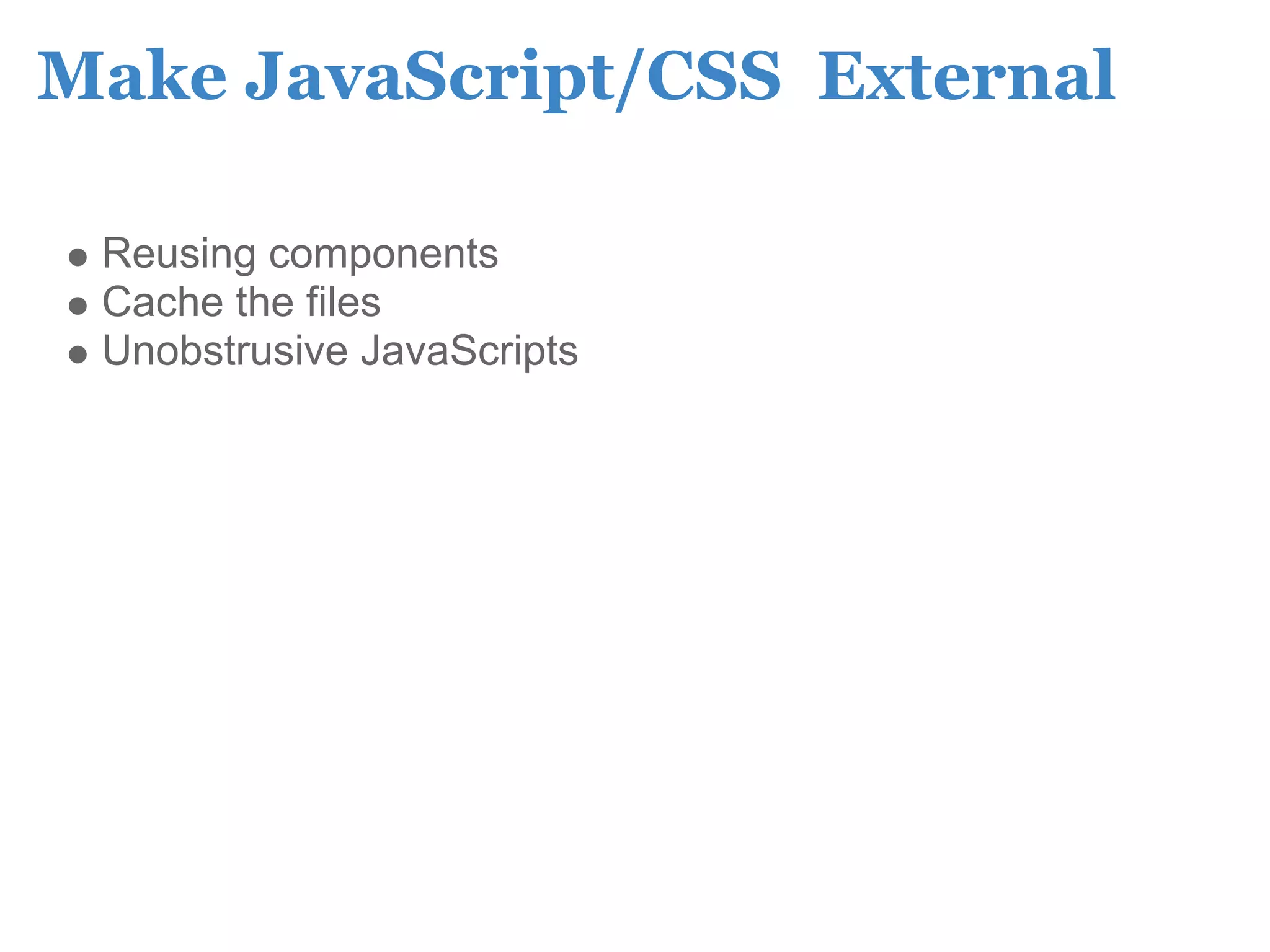
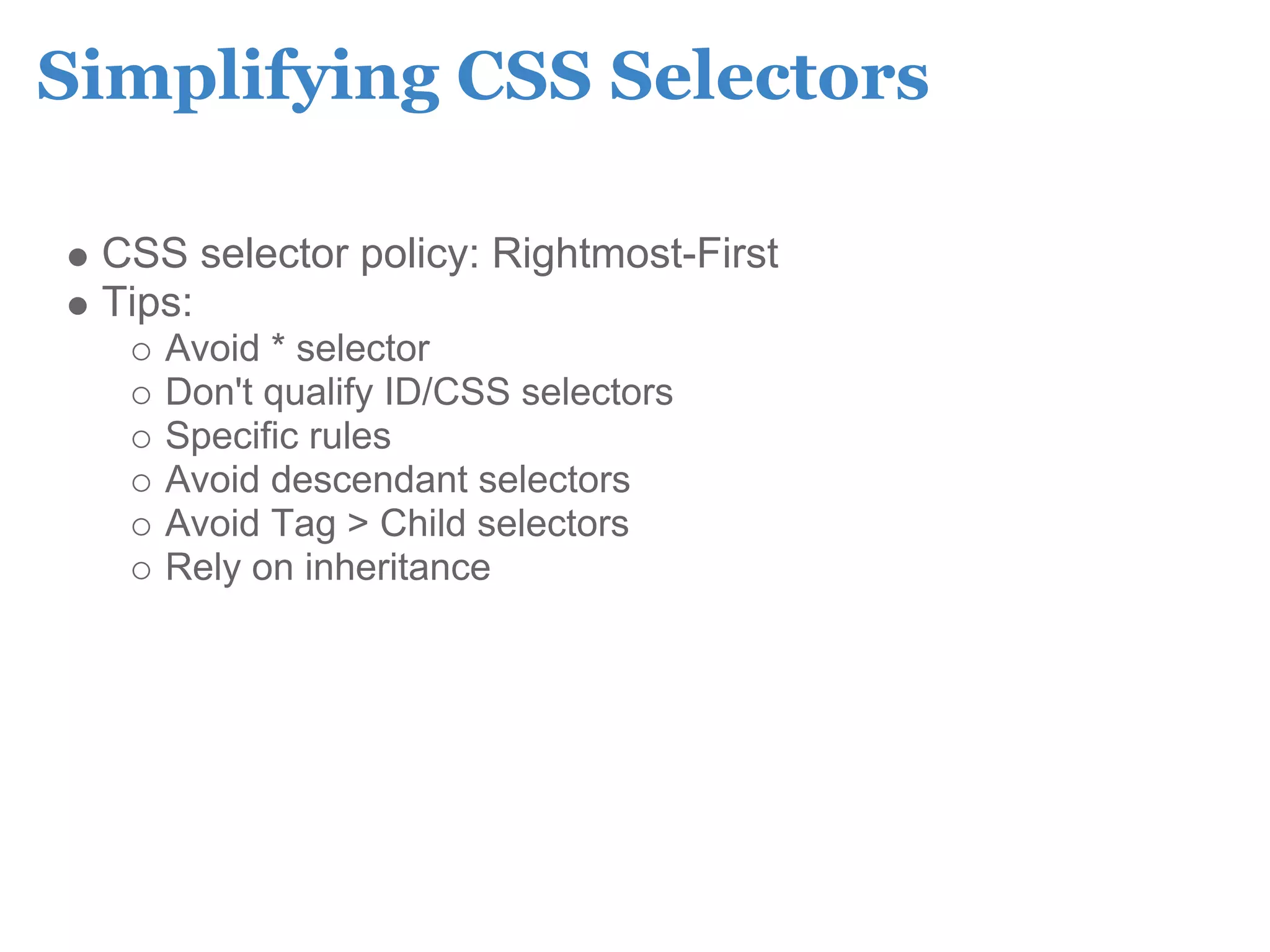
![Efficient JavaScript Tips
Using className instead of modifying style attributes of a DOM
element.
[bad
]
var foo = document.getElementById('foo');
foo.style.color = '#f00';
foo.style.fontWeight = 'bold';
[good]
.highlight {
color: #f00;
font-weight: bold;
}
foo.className = 'highlight';](https://image.slidesharecdn.com/tuningwebperformance-100326054703-phpapp02/75/Tuning-Web-Performance-37-2048.jpg)
![Efficient JavaScript Tips (con'd)
Appending a newly-created DOM element after modifying its
attributes. (avoid reflows)
[bad]
var foo = document.createElement('div');
document.body.appendChild(foo);
foo.innerHTML = 'Hello, world';
foo.className = 'hello';
[good]
var foo = document.createElement('div');
foo.innerHTML = 'Hello, world';
foo.className = 'hello';
document.body.appendChild(foo);](https://image.slidesharecdn.com/tuningwebperformance-100326054703-phpapp02/75/Tuning-Web-Performance-38-2048.jpg)
![Efficient JavaScript Tips
Using document fragment to create new contents.
[bad]
document.body.appendChild(createDivElement());
document.body.appendChild(createDivElement());
...
[good]
var frag = document.createDocumentFragment();
frag.appendChild(createDivElement());
frag.appendChild(createDivElement());
....
document.body.appendChild(frag);](https://image.slidesharecdn.com/tuningwebperformance-100326054703-phpapp02/75/Tuning-Web-Performance-39-2048.jpg)
![Efficient JavaScript Tips
Using array join instead of directly concatenate strings.
[bad
]
]
var a = 'Hel';
a += 'lo';
a += ', wor';
a += 'ld!';
[good]
var buf = ['Hel'];
buf.push('lo');
buf.push(', wor');
buf.push('ld!');
a = buf.join('');](https://image.slidesharecdn.com/tuningwebperformance-100326054703-phpapp02/75/Tuning-Web-Performance-40-2048.jpg)
![Efficient JavaScript Tips
Faster trim method: (use simple regular expression)
[bad]
str.replace(/^s+|s+$/g, '');
[better]
str.replace(/^s+/, '').replace(/^s+$/, '');
[much better]
str = str.replace(/^s+/, '');
for (i = str.length - 1; i >=0; i--) {
if (/S/.test(str.charAt(i))) {
str = str.substring(0, i + 1);
break;
}
}](https://image.slidesharecdn.com/tuningwebperformance-100326054703-phpapp02/75/Tuning-Web-Performance-41-2048.jpg)
